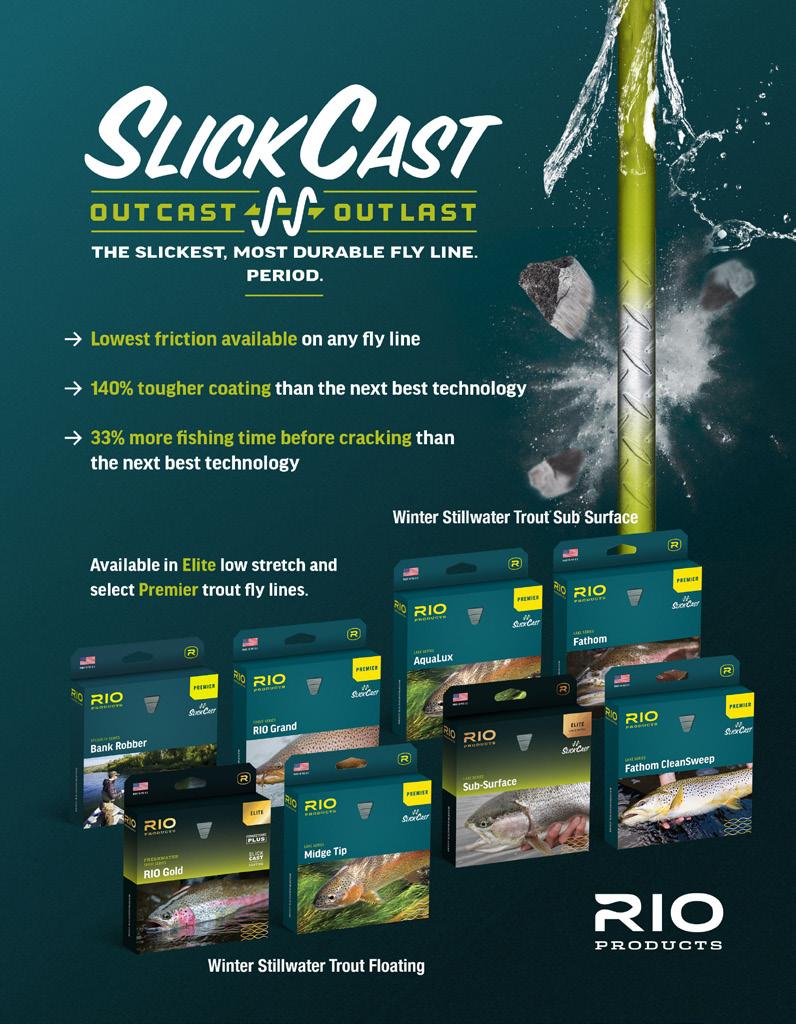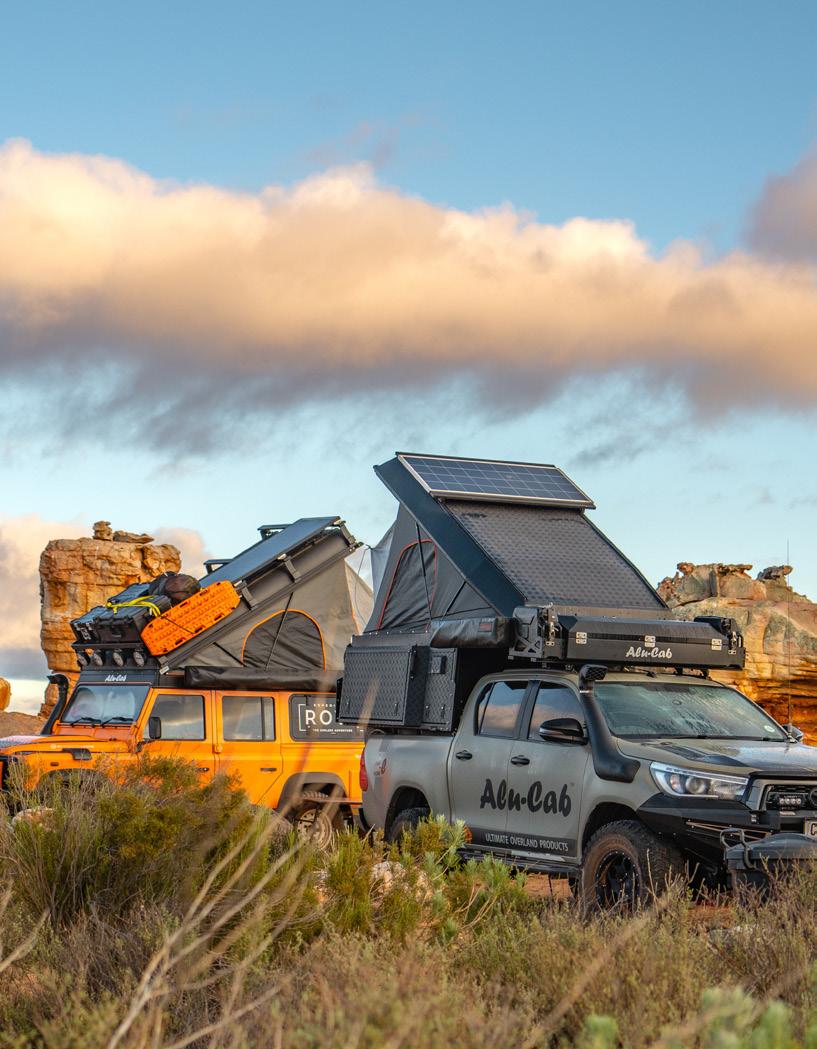





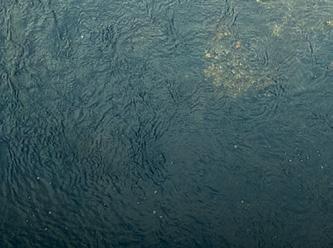



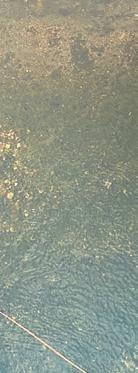







ABSOLUTE TIPPET



40% stronger UP TO WET-KNOT STRENGTH THAN PREMIUM COMPETITION
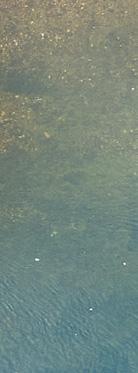

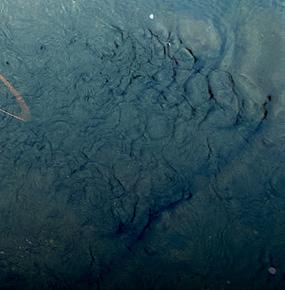





















The best gear inspires confidence. It’s comfortable, knows its job and pulls with you for years. Our Tropic Comfort Natural Hoody is the essential fishing top. Details include 40+ UPF sun protection, a generous hood, thumb holes for hand protection and a relaxed fit that won’t hamper your casting stroke. Constructed primarily from fabric derived from beech tree pulp, the Tropic Comfort Natural Hoody is the natural evolution of a fly fishing classic.


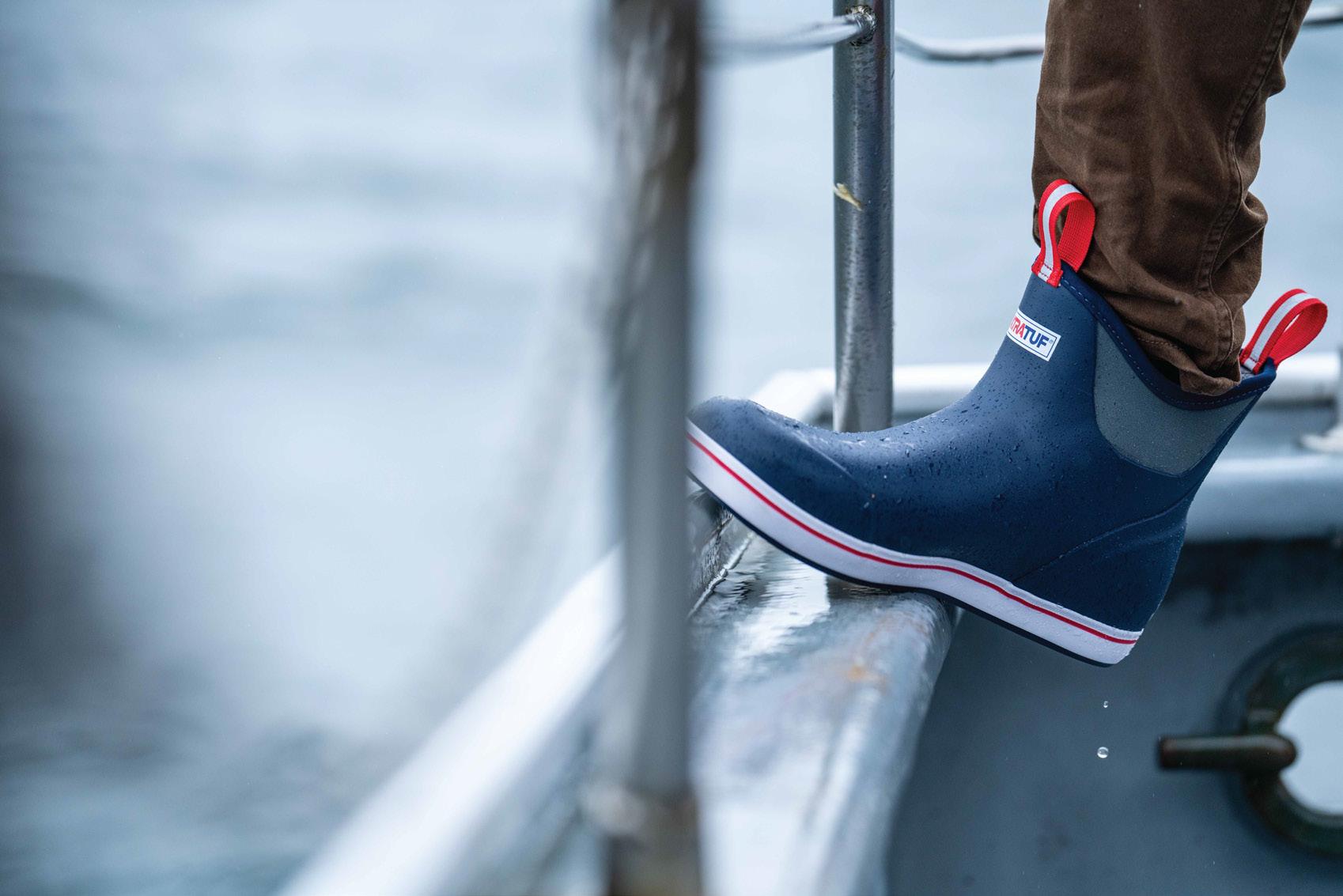
XTRATUF® boots are built for the worst , so you perform at your best .

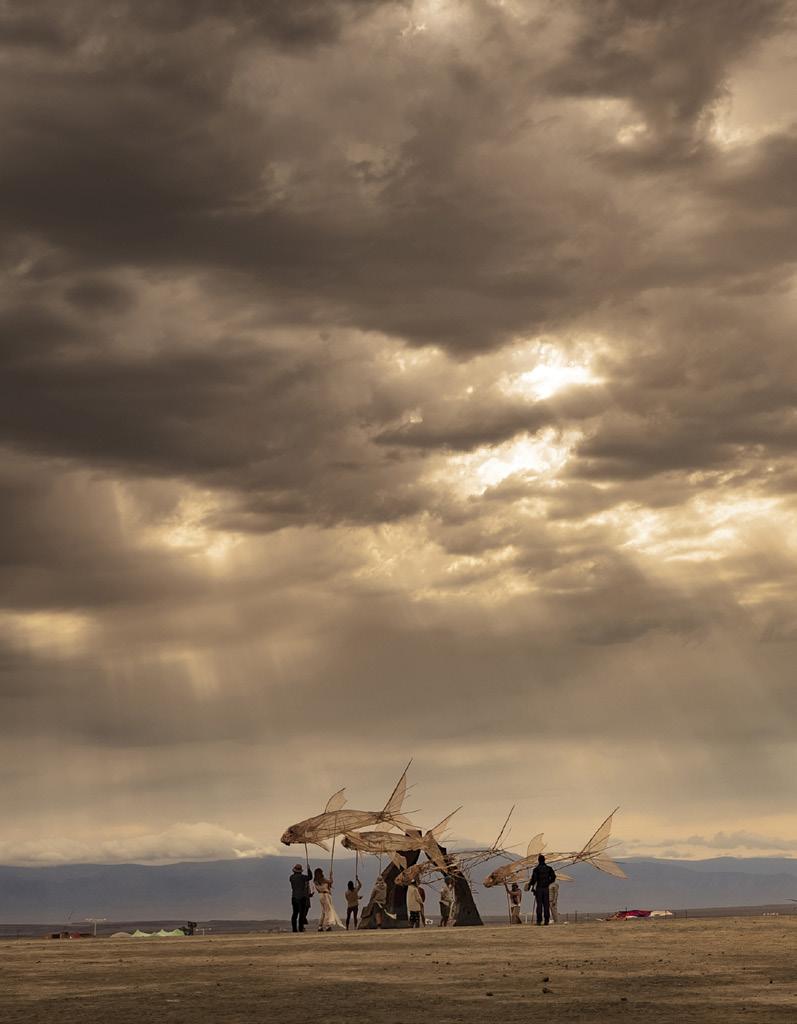
Cover: A man in his underwear practising what looks like Viking tai chi, coffee on the boil, a Basotho local and his pony, a cinematic master at work and a jazz musician dry fly fishing for yellowfish. This is the scene on the Bokong River in the mountain kingdom of Lesotho, as illustrated by Swedish filmmaker Rolf Nylinder Full story on page 38.
38. MARBATHO
On a whistle-stop tour from Cape Town via the Bokong River in Lesotho and on to Johannesburg, Rolf Nylinder and his friends Markus Lemke and Håvard Stubø did it all. They caught both hard-fighting indigenous species and beloved aliens, drank all the beer, danced in mountain villages, held skateboarding competitions, and had their eyes opened to what our part of the world is like.
54. FIGURING THINGS OUT ON THE HABAH
After transplanting his life from South Africa to Boston, USA for work, when life gets hard Jeff Tyser finds comfort in a striped bass fishery he has dreamed about since he was a boy growing up in Joburg.
62. SLAB CITY
The desert city of Dubai is synonymous with ostentatious wealth, fancy cars, space-age infrastructure and intense heat, but when The Mission’s Matt Kennedy paid a visit he found the city’s true value – droves and droves of hungry queenfish.
88. AMBUSH BABY
In the Thomas & Thomas Zone 10’2 2-weight, Gerald Penkler discovers a rod that excels at euronymphing, handles streamers and dries, and comes into its own at sneaky sight-fishing both in Europe and South Africa.
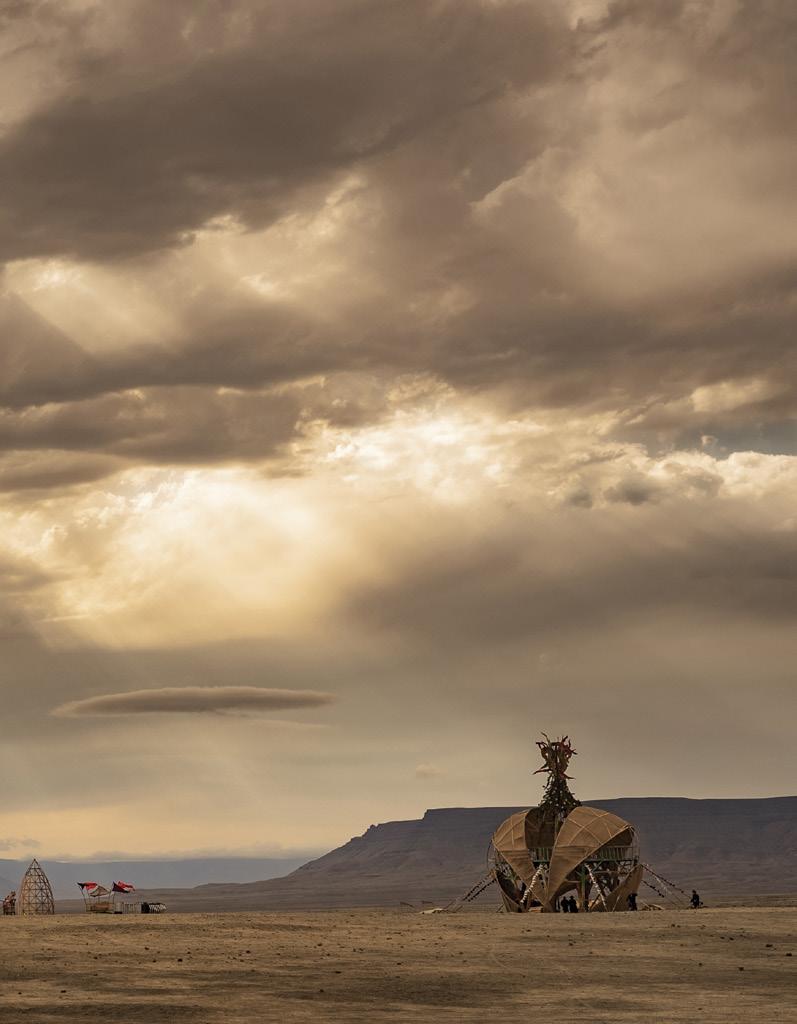
Revellers at AfrikaBurn take a break from taking acid and getting their tits out to become a school of sandfish using puppets made by local artist Chip Snaddon. Part of World Fish Migration Day 2024, the puppets are also part of the Saving Sandfish project run by the Freshwater Research Centre’s Fynbos Fish Revival initiative. Find out more at frcsa.org.za. Photo. Dr Jeremy Shelton
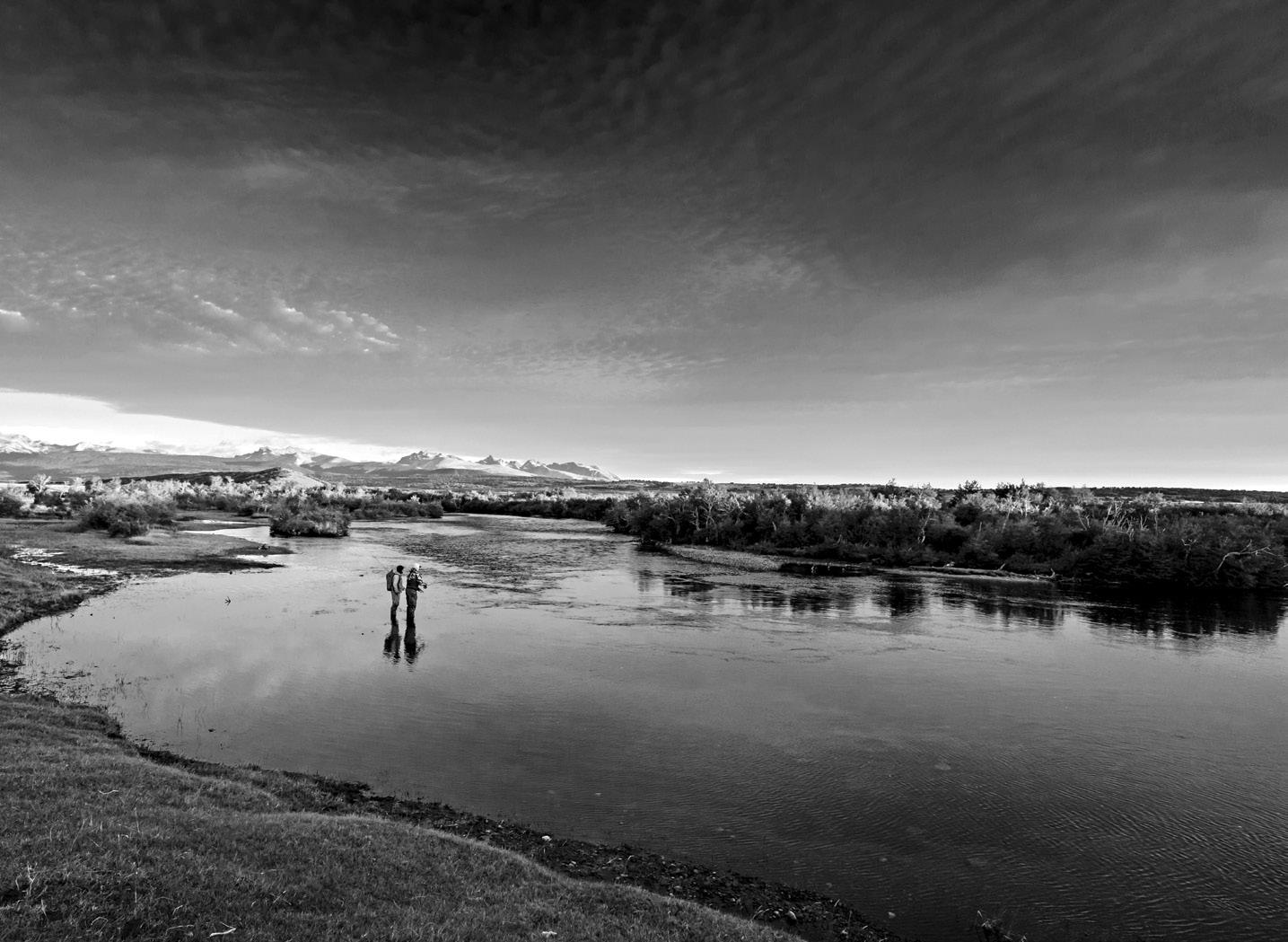



Built for the discerning fly angler at heart, who demands lightweight performance with crisp actions to deliver the perfect presentations ranging from dry flies and nymphing to throwing larger (wind resistant flies) and everything in between. Built on a 40 Ton Carbon blank there are three models in the range, all fitted with a combination of 2 Fuji Alconite
Stripper Guides and black PAC Bay Single foot guides. Finished with AAA+ Grade Natural Cork grips with Cork Burl trim and a lightweight CNC, machined aluminium reel seat with 1K Carbon Insert.

*Supplied in a Cordura covered triangular tube in a cloth bag.
CHECK
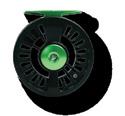

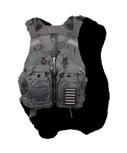
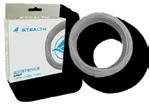
TUDOR CARADOC-DAVIES

We’re halfway through film fest season in South Africa with F3T having come and gone in June and IF4 about to happen in July and so far, so good.
In previous years there’s been a fair bit of criticism at the South African events around the film selection, because it is often A) very North American, which makes sense given the film fests and the major brands that fund many films are from there and B) very focused on trout and the US Midwest in particular. Once you have seen one slow story about trout with a twangy guitar soundtrack, that should be it for the selection, but too often there have been four or five. As one attendee who may or may not have been this magazine’s editor-at-large was heard to say, “What’s wif all the fokken troots?” It’s something I really hope the people who get to select the showreels continue to address, because there are loads of people from all over the planet making cool fly fishing films that will appeal to a broad audience.
This year things appear to be a bit different. The mood feels both more global and more local. There’s a spread of international films, but F3T and IF4 have welcomed locals to submit home-grown South African films. We had a film by Matt Kennedy in this year’s F3T focused on our art director Brendan “Bod” Body and his skateboarding and publishing background, and we have another film going into IF4 based on the Dubai comic you will find deeper into this issue. When F3T organiser Charles Werb asked the audience which their favourite film was, I snorted beer through my nose when someone shouted, “The one with the old skateboarding ballie!” To me, that felt like a breakthrough.
All that aside, perhaps what made what we’ve seen so far feel that much more like onse mense (our people) was the fact that the co-hosts, a range of local outfitters and shops, got to run their own commercials before the films started. Even though pretty much everyone attending these events is familiar with places like the Orange River, the Eastern Cape Highlands and other local destinations, it was pretty cool to see these destinations professionally shot and edited into great showreels by guide teams who go there all the time. We’ve been showcasing that kind of stuff to the world through the pages of this magazine for years, but to see it in another format was brilliant.
It says to the South African scene that we don’t have to watch what the rest of the world does first and then do some version of that. We can do this, and we can do it our way.

This magazine is home-grown, hand-rolled and smoked into being by a bunch of real humans, completely AI-free. If you enjoy what we do and feel you would like to support us in some way, get some The Mission merch from our website, buy us a beer/coffee on Patreon (patreon.com/themissionflymag), or just send us an email telling us how amazing our jaw lines are at info@themissionflymag.com.













EDITOR
Tudor Caradoc-Davies
ART DIRECTOR
Brendan Body
EDITOR AT LARGE Conrad Botes
CONTACT THE MISSION
The Mission Fly Fishing Magazine for Soutie Press (Pty) Ltd 25 Firth Road, Rondebosch, 7700, Cape Town, South Africa info@themissionflymag.com www.themissionflymag.com
CONTENT COORDINATOR Matt Kennedy
COPY EDITOR
Gillian Caradoc-Davies
MANAGING DIRECTOR
Ingrid Sinclair
ADVERTISING SALES tudor@themissionflymag.com
CONTRIBUTORS #46
Liam Surridge, Tony Fredriksson, Alasdair Grassie, Rolf Nylinder, Håvard Stubø, Jeff Tyser, Gerald Penkler, Sean Mills, Serge Samson
PHOTOGRAPHERS #46
Rolf Nylinder, Dr Jeremy Shelton, Liam Surridge, Tony Fredriksson, Alphonse Fishing Co, Matt Kennedy, Jeff Tyser, Riley Meyer, Brendan Body, Ross Garrett, Andrew Kennedy, Camm McDermott, Nick Bowles, Leonard Flemming, Sean Mills, Serge Samson, Cameron Musgrave, Ty Pollock, Gerald and Suzanne Penkler
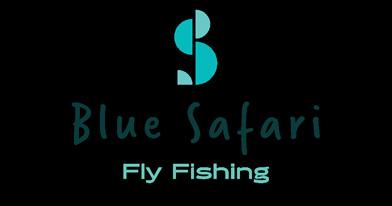

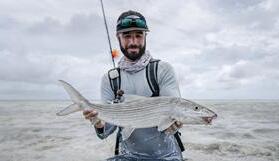
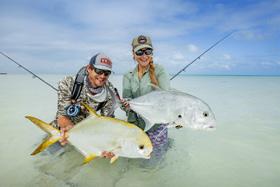
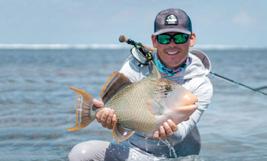

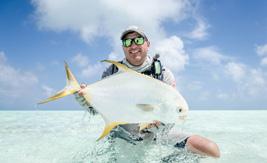

YOU CAN OWN...
...A PIECE OF ROLF NYLINDER’S SOUL... SORT OF.
The Swedish filmmaker is better known for his epic fly fishing films, but the man is a deft illustrator too (recently roped in to be Fjallraven’s next contributing Kånken artist). To go with the main story of this issue and the film Rolf made about his fly fishing in South Africa and Lesotho, we have a limited run of 15 fine art prints of this cover available. Each A3 print is printed on Hahnemuhle acid free cotton paper using archival inks and signed by Rolf. Pre-orders are open now with delivery in August. Email us on merch@themissionflymag.com

THE RETURN OF...
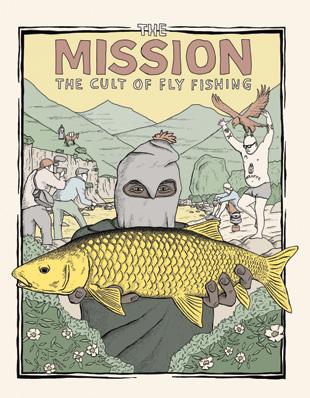
DON’T MISS... ...YOUR NEAREST IF4 SHOW. We are slap-bang in the middle of film fest season so if you missed the F3T shows in June, don’t stress because IF4 is showing in South Africa in Durban (17 July), Cape Town (18 July) and Joburg (19 July). With phenomenal films and over R900 000 worth in prizes including a trip to Alphonse Island on the table, you’d be silly to miss it. Tickets available at quicket.co.za
“R900 000 WORTH IN PRIZES INCLUDING A TRIP TO ALPHONSE ISLAND.”
...STEALTH. Remember stalwart South African fly fishing brand Stealth? Perhaps you still own a classic Stealth Bomber or an Infinity? The brand went quiet for a bit, but now under new management (the crew over at Sensation who also have Maxima and Dr Slick on their books) Stealth is back in a big way! They have a range of new rods in their lineup, plus reels, lines, packs, fly boxes and accessories. Check them out at stealthfishing.co.za
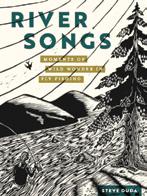
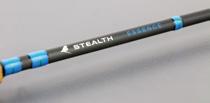
PRE-ORDER... ...RIVER SONGS BY STEVE DUDA. We’re waiting on our advance copy to arrive, so we have not yet read this, but when you know you know... We have no doubt River Songs –Moments of Wild Wonder in Fly Fishing is going to be a smash hit. Steve, former editor of Fly Fish Journal, is one of those writers who leaves you wanting to fish more, fish better, and connect more with nature than ever before. Through this collection of short stories with illustrations by Matthew DeLorme, we know we’re going to want to hit the road (book in tow of course). amazon.com


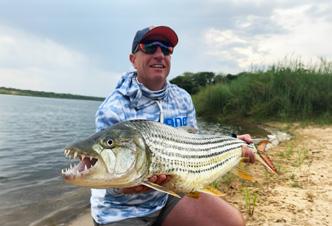
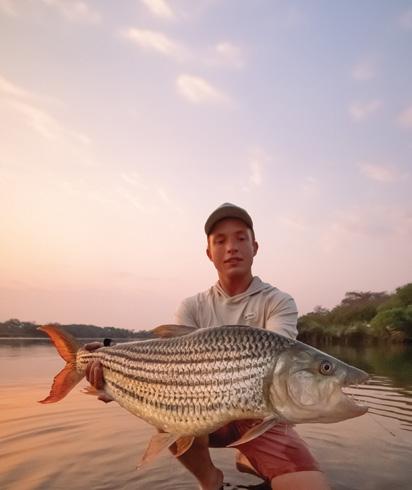
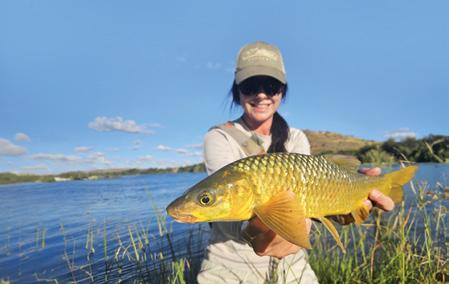


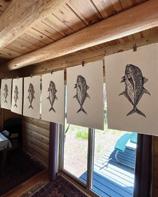
VISIT THE LADIES...
...FLY FISHING FESTIVAL IN MACLEAR. Are you a woman? Do you fly fish or are you keen to get into it? Then there are few better places to start than at the annual Maclear Fly Fishing Club Ladies Festival from 19 to 21 September. Comprising two days of guided river fishing for all levels of fly fishing (with backup stillwaters if the weather is bad), it is a great pressure-free way to get into the sport and nab some great prizes. R1 850 gets you three evening meals, two gourmet lunch packs, and a goodie bag. Special rates for accommodation have been secured. Contact maclearffc@gmail.com
CHECK OUT THE PRINTMAKER...
...RAY MONTOYA
Perhaps better known in fly fishing circles by his Instagram moniker @notemapez, retired teacher Ray Montoya is also a veteran DIY fly angler who, from Christmas Island to Socotra and beyond has fished and caught pretty much everything the hard way. He’s also a brilliant printmaker who now has a separate account with excellent fish prints going at @barefootprintmaker, which –given the years he spent hunting permit on remote beaches in Oman – is a particularly apt name.
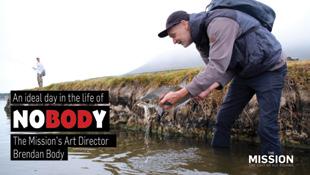
Platon Trakoshis’s Lalu Bug was originally developed to target the spooky carp of the Western Cape’s Berg River, but it is as effective with other dragonfly-loving species. Watch the tutorial at themissionflymag.com
“ORIGINALLY DEVELOPED TO TARGET THE SPOOKY CARP OF THE WESTERN CAPE’S BERG RIVER.”
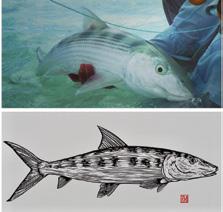
WATCH... ...NOBODY
One of The Mission’s unsung heroes, Brendan “Bod” Body, is many things. A former skateboarding magazine founder and editor, a profligate fly thief, a tall ginger giraffe with verbal diarrhoea, and our long-suffering art director. In this short film by Matt Kennedy, which recently screened at F3T South Africa, we are let into an ideal day with Bod at his home base in Noordhoek. Expect bowl skating, leervis catching, good ol’ days reminiscing and more. Watch it at themissionflymag.com
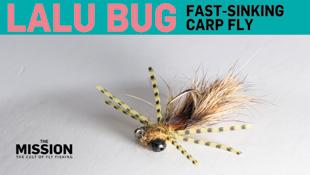

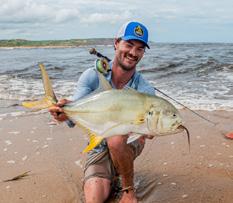




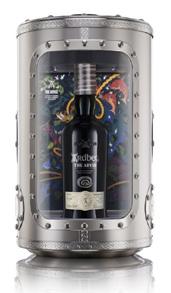
THE BOOZE
- ARDBEG THE ABYSS
If you’re the kind of guy who likes to track down rare bamboo rods and sell other people’s kidneys (unsolicited) for them on the black market, then perchance Ardbeg The Abyss is the whisky for you. Made from the original heavily toasted French oak casks used to make Ardbeg Corryvreckan Limited Edition, the remaining few casks now return as Ardbeg The Abyss – an exceptionally rare whisky bottled at cask strength 48.4% ABV, and limited to only 400 bottles. So special is this dram that Ardbeg roped in acclaimed comic book artist Tradd Moore to create a limited-edition comic to sit alongside it. Expect an aroma that’s rich, pungent and aromatic, but somehow deep and gentle at the same time; a mellow mouthfeel with a hint of spiciness, chocolate, toffee, old leather and smoke and a finish of baked apple, aniseed and oak. If you do manage to get your hands on one, give us a call when you crack it. Please. ardbeg.com

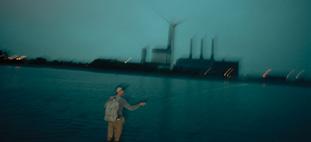

THE BEATS - HABAH HOUSE BOSTON BLUES
Solo DIY fly guy Jeff Tyser has been mooching around Boston, searching the harbour, the bays and docks for bait-smashing stripers (more on that on page 54). This is the playlist that’s been keeping him company on and between sessions on the water. Listen at themissionflymag.com
Violent Femmes - American Music
The White Stripes - Hotel Yorba
The Felice Brothers - Frankie’s Gun
Neutral Milk Hotel - In the Airplane Over the Sea
Phosphorescent - Ride On / Right On
The Growlers - Going Gets Tough
Shannon & The Clams - Runaway
The Flaming Lips - She Don’t Use Jelly
Kurt Vile - Pretty Pimpin
The Breeders - Drivin’ on 9 Wreckless Eric - Whole Wide World
Shannon & The Clams - The Boy
Midlake - Roscoe
Big Thief - Not
Peter, Bjorn and John - Objects of My Affection
Timber Timbre - Demon Host
Daniel Johnston - True Love Will Find You in the End
YOUR FISHING FUTURE ACCORDING TO YOUR STAR SIGN AS READ BY BABERMAN, THE LEGENDARY GRUMPY CATFISH.
Leo (July 23 - August 22)
I’m not supposed to disclose this stuff because as your go-to fortune teller I’m meant to be neutral, but being a catfish I feel pretty proud about being a Leo. I mean, as fish we are looked down upon, thought of as bottom-feeding wanksocks that only Orange River weirdos and David Pike Fly could love. But as a star sign, us Leos are drawn to the light as shining optimists, regal lions and sunny disposition so-and-sos. Either way you hate us… And we don’t care because life is peachy. There’s this asteroid, right, called Vesta and apparently it’s totally revving our sex lives to the max. We’re talking spawning runs to embarrass a Roman orgy. Roe hoedown. Tantric taramosalata. Next-level stuff. So, if I seem unusually relaxed and honest, while seductively smoking a Gauloises in tousled white sheets, you know why.
Virgo (August 23 - September 22)
Ah poor Virgo, it’s all about how it looks right? There’s the Instagram profile where you list yourself as a “public figure” and punt your sponsored posts for the most average of fish in the easiest of fisheries. Then there’s the deep thoughts generated by AI algorithms, the posing on motorbikes à la Top Gun, the onanistic daily worship of self. We know it, but you don’t. It’s time for what your fellow influencers call a digital detox. This is your mission should you choose to accept it. Get out there and go fishing, but don’t tell anyone. Don’t post a pic, don’t share coordinates, don’t share a cryptic message about finding yourself offline (online). In fact, don’t share anything about your session save for the farts wafting up from your waders to your very own nostrils. Relax, enlightenment will find you before you find it.
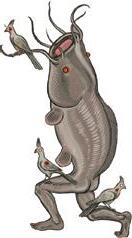


Stanley and Mossy Oak®, the number one brand for all-things camo, bring you this new, timeless, tough-as-nails Legendary Bottle and Trigger-action Travel Mug for your next hunting, fishing or camping trip. Sporting a classic, original Mossy Oak® look, these pieces will evoke memories of your first big catch, or time spent with family and friends around the campfire. Whether at play or on the job, your drinks will stay hot (or cold) for hours on end, thanks to signature Stanley double-wall vacuum insulation.

IS IT A SALMON? IS IT A KINGFISH? NO… IT’S AN AUSSIE SALMON. SAFFER EX-PAT LIAM SURRIDGE RATES THIS SIGHT-FISHING SPECIES AS A MUST WHEN DOWN UNDER.
Photos. C/o Liam Surridge
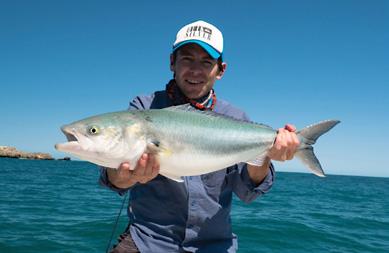
The name “salmon” is a misnomer, as western Australian salmon Arripis truttacea are not true salmonids (family Salmonidae) but, instead, are members of the family Arripidae, a group of salmon-shaped fish that occur only in Australian and New Zealand waters. I live in Western Australia and target the large Arripis truttacea (sister to the eastern variant Arripis trutta) which average around 6kg or 70cm. The adult fish migrate up the coast in summer in large spawning aggregations and are perfect sight-fishing targets from the shore or boat. Juveniles of around 30cm, aka “salmon trout”, are caught in estuaries.
Aussie salmon are endemic to southern Australia and found up the coast of Western Australia during their migration, from Esperance past Albany and the Margaret River. If the water is cool enough, they will head all the way up to the metropolitan waters of Perth. Usually, March until June are good months to target them on their spawning migration. Consistently good spots to target them would be Cheynes Beach, Albany and Dunsborough, although it is usually a matter of being in the right place at the right time. They can linger on reefs or swim along in the shore break and can also be found in deeper water predating on baitfish schools.
A 9- or 10-weight rod is good for targeting Aussie salmon and, if fishing from the shore, a floating line or sink tip are go-tos. From a boat a sinking line is a good option if the fish are slightly deeper. However, fishing topwater is also an option, with a sink tip or full floater. Aussie salmon are not leader-shy so a 20 or 25lb tippet is the way to go. They don’t have sharp teeth but their mouths will wear a tippet thin so a 40lb short mono bite trace can help you avoid losing fish during an extended fight. Any topwater patterns are good. I usually fish a NYAP or a foam popper. For subsurface action, baitfish patterns like Clouser Minnows or Deceivers are good fly choices, in a size similar to the bait in the area.

“AUSSIE SALMON LINGER ON REEFS OR SWIM ALONG IN THE SHORE BREAK.”
These are a great DIY fish so it’s a matter of finding schools on the beach. Even better if you have access to a boat. There are no dedicated guides in Perth, but Anthony Rechichi of Great Southern Fly Fishing targets them around Denmark/Albany if you need a boat and guidegreatsouthernflyfishing.com.au

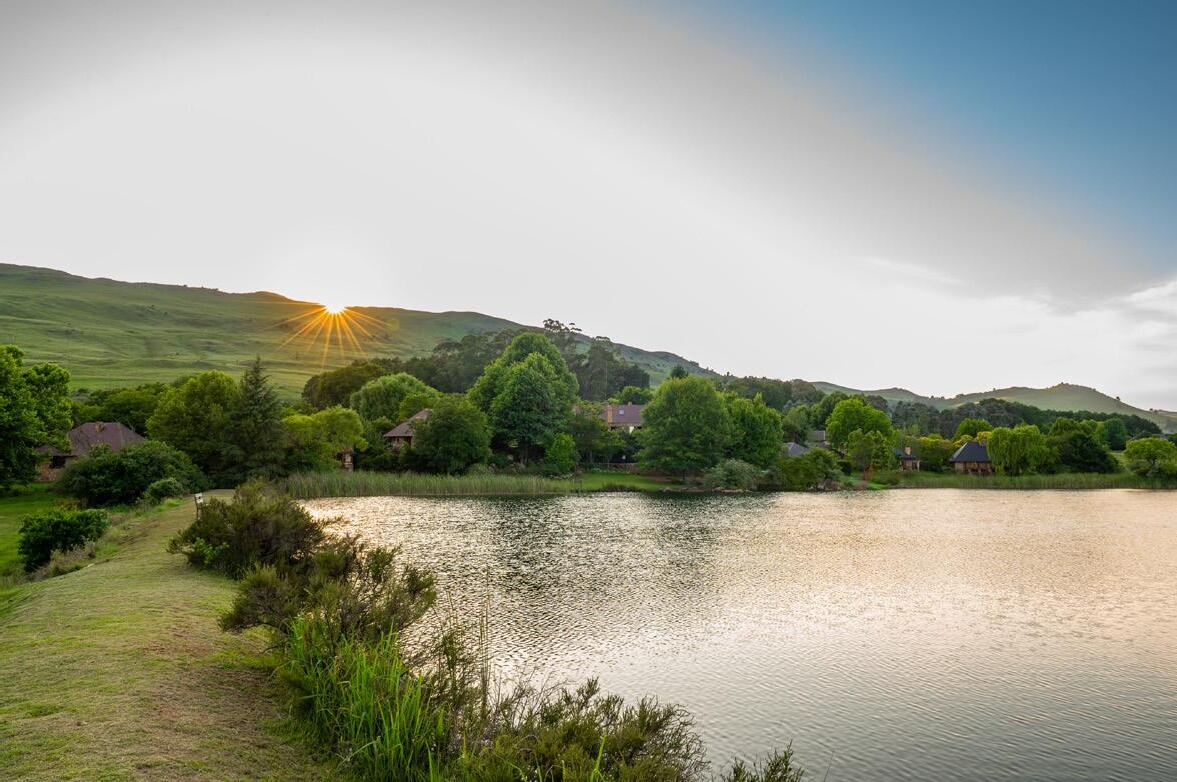

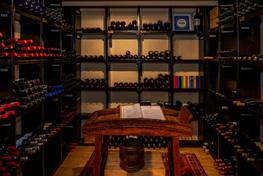
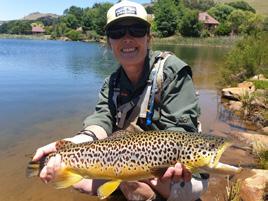
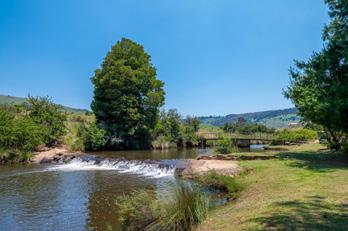
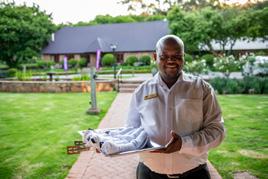

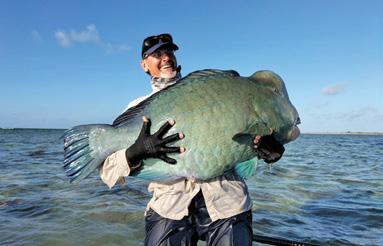
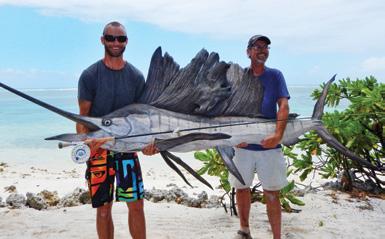
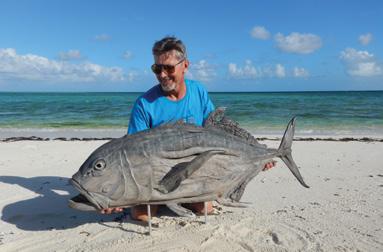

WHERE OTHERS SEE FIREWOOD, A CLUB OR, SIMPLY, DEAD TREES, DRIFTWOOD SCULPTOR TONY FREDRIKSSON SEES THE ADIPOSE FIN ON A TIGERFISH, THE GILL PLATES OF A BUMPHEAD PARROTFISH OR THE STREAM-LINED FLANKS OF A SALMON.
Photos. C/o Tony Fredriksson, Alphonse Fishing Co
ARE YOU?
I am Tony Fredriksson, born in Zimbabwe, studied art in the UK and settled in South Africa in 1980. Driftwood sculptures have been my fulltime occupation since 2010. Since I was a child, I have been obsessed with catching everything that swims. My dad would drop us off at Matopos Dam in southern Zimbabwe to camp and fish for the entire school holidays. Camping and fishing became my life’s passion.
While living as a missionary in Boksburg, I made my first fly rod using a short fibreglass blank. Paperclips were used to make the eyes. Unfortunately, the carp in Whitfield Dam were not impressed. The ultimate respect for fly fishing only came in 2017 when I went to Alphonse Island, Seychelles.
During my lifetime I have had a taxidermy business with my brother, done fish illustrations for books and magazines, worked for a screen printer (printing fish on the side), established and ran a fishing club in the Lowveld and produced museum displays.
DO YOU SPECIALISE IN?
I used to specialise in limited edition sculptures of African wildlife, pets, skulls, and insects. An opportunity arose when a gallery owner saw a sculpture of a John Dory which I made from off-cuts of railway sleeper.
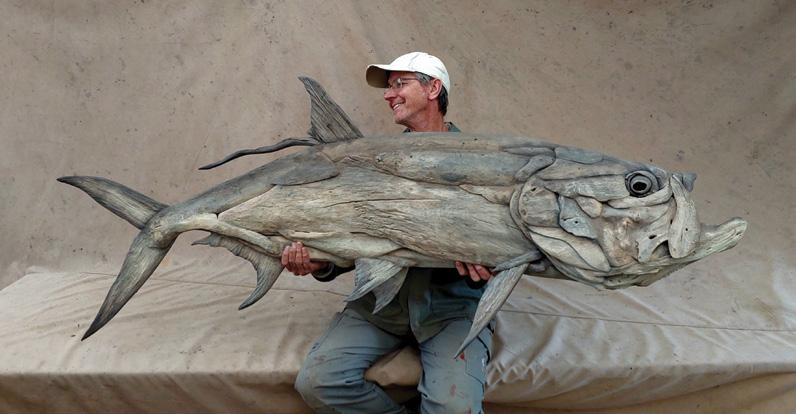
“MUCH OF THE WOOD I USE I HAVE GATHERED ON FISHING ADVENTURES.”
I was invited to host my first solo exhibition with one condition… all the sculptures had to be of fish made in the same way as the John Dory. I had collected some driftwood which I wanted to convert into rustic décor and decided to produce a lionfish for the exhibition with those pieces. A hotel group purchased several fish from this exhibition for a private island in the Seychelles. This triggered a demand for driftwood sculptures from the fly fishers who were visiting the islands from all over the world. Social media and word-of-mouth meant further demand for a variety of subjects in driftwood, including birds, mammals, people, insects, and mechanical objects.
I have also been a photographer for a mission group travelling in Africa. This developed into another passion, photography of the different fish species as reference material for paintings and sculptures. I have been absolutely captivated by the beauty and colours of reef fish. I also enjoy the anatomy and versatility of fish in different habitats. To capture and hold the different species in real time has been a highlight. Examining my subjects first-hand, before I sculpt them, always benefits the final product. I am constantly enthralled by everything in God’s creation. My sculptures are a dim reflection of His handiwork.
I am known for scouting the pavements of town, my friends’ gardens and firewood supplies, as well as wild places I find myself in. You will often see my vehicle parked in odd places. Much of the wood I use I have gathered on fishing adventures to rivers and dams.
I have returned home with our boat laden with soaking wood to be dried in my hothouse. My favourite place for collecting special wood is on a private game farm in the north that we have access to. I often see a shape, texture, body part or something special in a piece of wood. Back home I label these, designated for a specific sculpture, and start collecting pieces to add to it. Some of these collections have been in the making for many years, until one day I get a request for that specific subject and then start searching in earnest for any missing pieces.
Because of constant commissions, my time is limited, but I do have a bucket list of things that I long to make. There are a few boxes full of vintage motorcycle pieces just waiting to come together.
For more of Tony’s work check out his website at openskywoodart.com
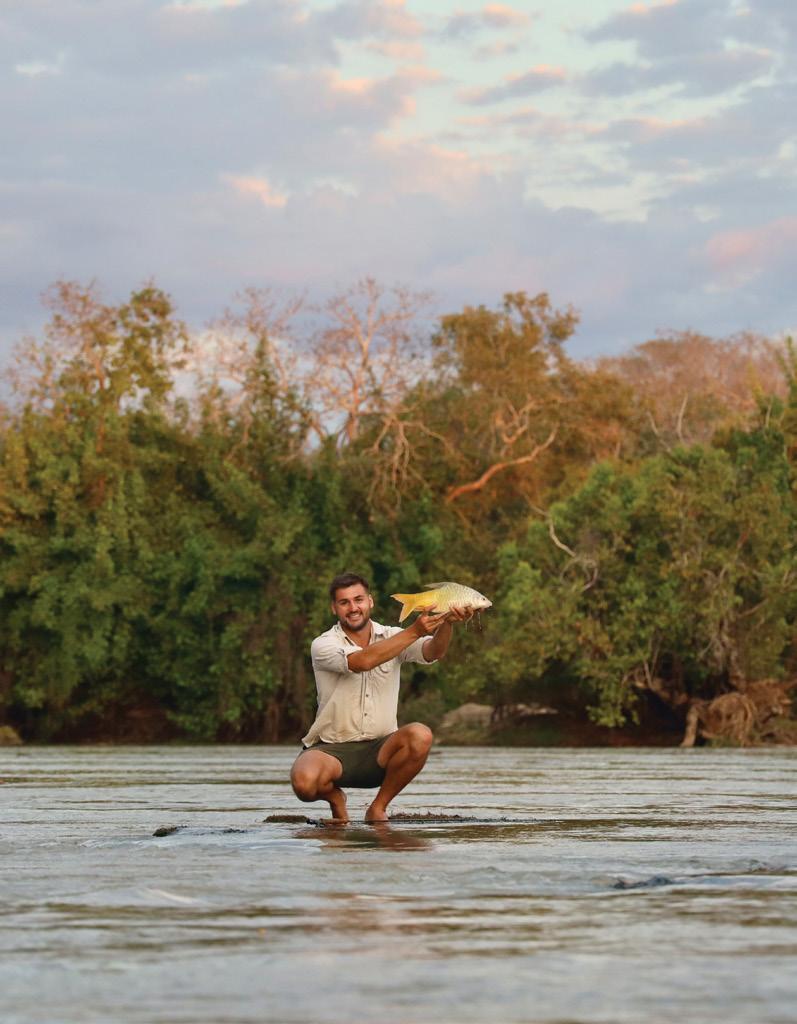
GENERALLY FLY FISHING GUIDES WORK IN PRETTY WILD PLACES. BUT SCOTTISH GUIDE ALASDAIR GRASSIE WORKS IN ONE OF THE WILDEST PLACES ON EARTH, NYERERE NATIONAL PARK (FORMERLY KNOWN AS THE SELOUS GAME RESERVE) IN TANZANIA WHERE, AMID BIG FIVE GAME AND OTHER TOOTHY CRITTERS, HE GUIDES CLIENTS OF MAJESTIC RIVERS (MAJESTICRIVERS.COM) INTO TANZANIAN TIGERFISH, YELLOWFISH, VUNDU, BAGRID CATFISH AND OTHER SPECIES. HE’S THIS ISSUE’S HIGH FIVES GUIDE.
5 best things about where you guide?
1. The scale of water in the Kilombero Valley. We’ve touched only a small portion of what’s available.
2. The incredible variety of fishing – white water nymphs, vundu poppers and the whole catalogue of tiger rigs are necessary on every beat.
3. The remoteness. It’s an extremely special place that very few people have visited. It’s possible for us to go months without seeing another person. It’s fantastic for the visiting anglers, and an interesting social experiment for the seasonal camp residents.
4. The bush. Being deep inside Nyerere National Park is very special. The vegetation and wildlife are unique, even compared to neighbouring wild spaces in Tanzania.
5. The setup. The camp was once just an angling basecamp. A woman’s touch has since created a refined bush oasis.
5 fishing-connected items you don’t leave home without before making a mission?
1. A tourniquet. Given to me before my first season in the valley, this item lives permanently in the bottom of my fishing pack.
2. Zinc stick. In season I opt for the Aussie cricketer or lifeguard appearance. A vital piece of kit for long sessions on the river.
3. Copious amounts of optimism. The dense Miombo woodland hosts tons of beautiful surprises and every cast has fish-of-a-lifetime potential.
4. Spare spools. There’s lots of fishy structure hidden in the coloured water, and it’s not rare to have your fly lines punished. I’m always carrying spare lines and a variety of options to fish throughout the water columns.
5. The river stompers – the nickname given to my sandals. They’re far from fashionable yet deliver ventilated fourwheel drive.
5 bands to listen to while on a road trip?
1. Peat & Diesel.
2. Dire Straits.
3. Mànran.
4. Tom Petty.
5. Springsteen.
5 things you’re loving right now?
1. Arusha (Tanzania’s third-largest city and the safari gateway to the Serengeti and other northern national parks). I’ve recently relocated up to the north. I’m loving the social life and surroundings.
2. Jim Hamilton and Andy Goode’s Rugby Pod. Released weekly, it keeps me up to date on the beautiful global game.
3. Club rugby. Now at the business end of the season, things are getting exciting across all competitions.
4. Mexican food. We’re not spoilt for options in Tanzania but some gems do exist.
5. Bada Bing Burger, Tanzania’s finest hole in the wall. A very unsuspecting establishment on the Arusha bypass run by a crazy Kiwi bush pilot.
5 indispensable flies for saltwater?
1. Crazy Charlie bead eyes.
2. Crazy Charlie lead eyes.
3. Homer Shrimpson.
4. Small deceiver patterns.
5. Salty Mullet.
“I WORK IN A PLACE THAT VERY FEW PEOPLE HAVE VISITED. IT’S POSSIBLE TO GO MONTHS WITHOUT SEEING ANOTHER PERSON.”
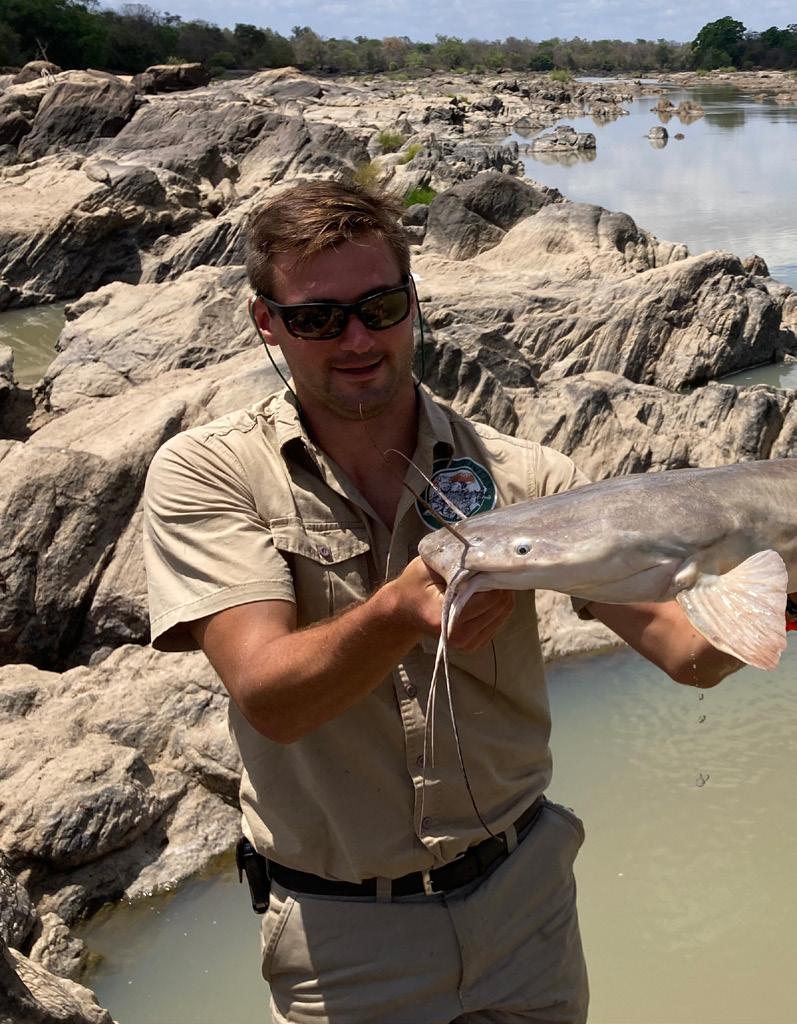

“KITOGA, THE TANZANIAN VARIETY OF BAGRID BARBEL, ACTIVELY PREDATE AND THEY LOVE THE WHITE WATER. IF THIS FISH DIDN’T HAVE WHISKERS, IT WOULD BE TOP DOG.”
5 indispensable flies for freshwater?
1. Veteran guide Lionel Song’s Kilombero Tsetse fly.
2. Brushy Baitfish.
3. Puma varieties.
4. Cascade Shrimp.
5. Sunray Shadow.
5 favourite fly fishing destinations globally?
1. The Kilombero. There are lifetimes’ worth of water in the valley and dozens of targetable species in a remarkable setting. It’s angling paradise.
2. Scottish Highlands. Every puddle and hill loch is teeming with trout.
3. The Carolinas. I lived a few years in the US and had lots of fun between the coastal mud flats and the Appalachian rivers.
4. Central Otago. I did a study exchange in New Zealand some years ago where I spent many more hours on the rivers than in lectures.
5. Cameroon. I’ve been once to the Faro River. Super place.
5 of the best things you have picked up from guiding?
1. Lots of enjoyment. I really do love my fishing and it’s a treat being able to spend my time surrounded by the sport and by others who are equally passionate.
2. Learning. I have taken so much from my time guiding. I’ve learned loads beyond the river and the bush. The curriculum involves everyday challenges dealing with people, camp, machinery, hospitality, logistics, all on top of the many variables that accompany the sport of fly fishing.
3. Friends. I’ve made many friends throughout my years fishing in many weird and wonderful places. It’s a fantastic sport for many reasons but the many friendships are important.
4. Stories. There is so much that takes places through the season. Any reflection on days in the bush prompts a collection of so many hilarious, colourful, and challenging stories.
5. Being decisive. Making a plan is easy; sticking to it when things aren’t working or changing plans entirely requires tough calls. Quick thinking around wildlife or navigating the river is essential.
5 of the worst things you have picked up from guiding?
1. Living in the bush makes everywhere else seem boring and uneventful.
2. Deep depression each year when the rains finally blow the banks of the river and put an abrupt end to our season.
3. Being spoilt with brilliant exploratory fishing.
4. A small obsession with fish and the sport. It certainly dominates my thought train for large portions of the calendar year.
5. Being rendered unavailable for large portions of the event calendar. Social invitations are becoming fewer and rarer.
5 hints that your client is a tool?
1. When they have clearly read but ignored our recommended tackle list.
2. The intolerable chat about their Rolex collection.
3. Rig 12 different rods and insist they all come along for the day’s expedition.
4. Blaming the barbless hook for their zero-purchase strike.
5. Thinking that the guides control the uncontrollable.
5 funniest situations you’ve experienced while guiding?
1. Lionel Song splitting his shorts wide open, early in the day, while out with a family group. That day he had opted against undies.
2. The look given to me by a group of Aussie clients after witnessing a palm nut vulture savage a very large labeo out of the rapids in flight. I was explaining to them about its largely vegetarian diet.
3. Filming with African Jack (an outdoor video production company - youtube.com/@AfricanJackTV). These guys are top quality humour all day long.
4. Photoshoot with a big tiger turned into a remarkable clothing-shredding saga. Both fish and client fortuitously unharmed.
5. I had a thorn in my foot that we had failed to remove for numerous days. The team often remind me of this comical period in which I became the world’s most insensitive and intolerable human being.
5 people you would like to guide or fish with?
1. Jeremy Wade. He seems like good value on a Tanzanian fishing adventure.
2. African Waters guide Greg Ghaui. He’s a good friend and a tiger encyclopaedia. We always seem to be fishing in different places at the same time.
3. Willie the Ghillie. He’s salmon legend in Scotland. I’d love to see him roaming the Kilombero.
4. Hemingway. This would be purely for the rum and story session post-fishing.
5. Gordon Ramsay. I’d like him to commentate the safari in good fashion.
5 fish on your species hit list?
1. Golden dorado.
2. Goliath tiger.
3. Arctic char.
4. Barramundi.
5. Congolese labeo.
“MAKING A PLAN IS EASY; STICKING TO IT WHEN THINGS AREN’T WORKING OR CHANGING PLANS ENTIRELY REQUIRES TOUGH CALLS.”



“IT’S IMPORTANT TO KEEP OPTIMISM HIGH. YOU’RE FISHING IN A STUNNING PLACE AND THINGS CAN GET CRAZY VERY QUICKLY OUT OF NOWHERE.”
5 shower thoughts that have occurred to you while fly fishing?
1. How one can properly utilise a Spey rod on the Kilombero.
2. How to smuggle in a jet ski into the Kilombero.
3. Domesticating a hippo and riding it down Shughuli Falls.
4. Populating an elaborate fish tank in camp.
5. Building a platform in the baobab and relocating my entire tent setup to the treetops.
5 of the most underrated species in your book?
1. Snook. Excellent mangrove fishing. Also, top fun under dock lights in the marina at night.
2. Kilombero yellowfish. This variety of Labeobarbus is large and powerful, visible in shallow intricate water. I could happily retire my tiger rig and spend my days targeting yellows.
3. Kitoga, the Swahili name for a Tanzanian variety of bagrid barbel. If this fish didn’t have whiskers, it would be top dog. They actively predate, unlike their bottom-feeding, whiskered relatives, and they love the white water.
4. Barracuda. Overlooked by too many flats and mangrove anglers.
5. Jack crevalle. Machine of a fish that deserves trophy status.
5 things (outside of the fishing) that make where you fish so special?
1. The pottery. On the river we’re finding huge volumes of pottery. There are certain islands with extraordinary amounts of decorated fragments. We had an antiquities team come and visit to sample the stuff. They believe there was a large community resident on these islands in about 600AD.
2. History. Beyond the pottery, the history of the area is special. The park has been protected for over a century and has many extraordinary landmarks and stories behind them.
3. Remoteness. It feels very special to be so remote, particularly being able to fish in areas where very few people have ever visited. It is an extremely vast area with so much water to explore.
4. Pinkie, our resident albino hippo. She’s gorgeous and has a big personality.
5. Variety. I’ve been to very few places that have this variety of fishing. There’s something for everyone and so many targetable species, each requiring a different skillset and approach. I could be here for a lifetime and never get bored.
5 destinations on your bucket list?
1. Nyerere Dam. This new body of water is large and unexplored. It’s on our doorstep at camp but is still developing as a fishery. We’re already seeing it produce but, as we push further, it will certainly deliver some monster tigers.
2. Bolivian jungle. Jungle predators in remote gin clear rivers hit all my buttons.
3. Congo/CAR. I’d love a crack at goliath tiger on fly.
4. Iceland. For the classic picturesque Atlantic salmon in glacial waters.
5. Seychelles. For the salty variety.
5 essential ingredients for an incredible mission?
1. Josephine, my girlfriend. She’s a weapon with a 5-weight, loves the bush, and adds class and fun to any adventure.
2. The bush kitchen. Adventures need quality mealtime. We’ve got the whole setup packed into a couple boxes.
3. Percolator coffee. If it’s not percolator, then she won’t drink it.
4. Campfire whisky. Nothing fancy but it fuels the campfire stories.
5. Leatherman. For the toolbox, kitchen, medical kit, tacklebox. Essential.
5 things about fly fishing that you may never understand?
1. Why fly lines are so expensive.
2. Atlantic salmon. These phantom fish are painfully unwilling to participate. I’ll never understand the source of our relentless optimism.
3. Competition fishing. Each to their own, but you won’t find me participating in any variety of competitive fishing.
4. Why fly anglers think they’re better than the other disciplines.
5. Posh trout streams that only allow dry fly and prohibit strike indicators, outside of the hatches.
5 common mistakes that most clients make?
1. Picking up the fly too early. So many tiger strikes are right in at your toes. Take a few steps back from the water and allow that fly to fish right into the bank.
2. Fishing poor hooks. Big fish like to straighten and break them.
3. Losing optimism. When the fishing is slow, or the client casting poorly, confidence can drop. It’s important to keep optimism high. You’re fishing in a stunning place and things can get crazy very quickly out of nowhere.
4. Playing the yellows like tigers or tigers like yellows.

When swapping between your 9-weight and 5-weight, remember what’s on the end of it and how you need to fish them. Full lock on the yellows and it’s well broken. Lift your rod on the tiger and it’s long gone!
5. Not regularly checking their rig. Every half dozen casts, have a quick look at your hook and check for tail wraps, wind knots and all the things that can bugger your presentation.
Your last five casts were to?
My last 500 casts were all chucking the old 16ft double at salmon in Scotland with zero success.
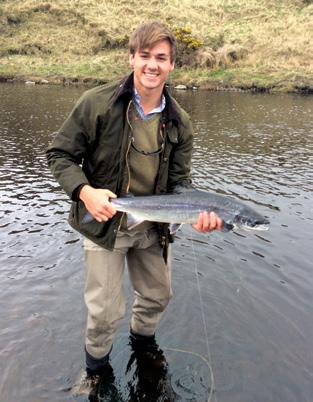
ON A WHISTLE-STOP TOUR FROM CAPE TOWN VIA THE BOKONG RIVER IN LESOTHO AND ON TO JOHANNESBURG, SWEDISH FILMMAKER ROLF NYLINDER AND HIS FRIENDS MARKUS LEMKE AND HÅVARD STUBØ DID IT ALL. THEY CAUGHT BOTH HARD-FIGHTING INDIGENOUS SPECIES AND BELOVED ALIENS, DRANK ALL THE BEER, DANCED IN MOUNTAIN VILLAGES, HELD SKATEBOARDING COMPETITIONS, AND HAD THEIR EYES OPENED TO WHAT OUR PART OF THE WORLD IS LIKE.
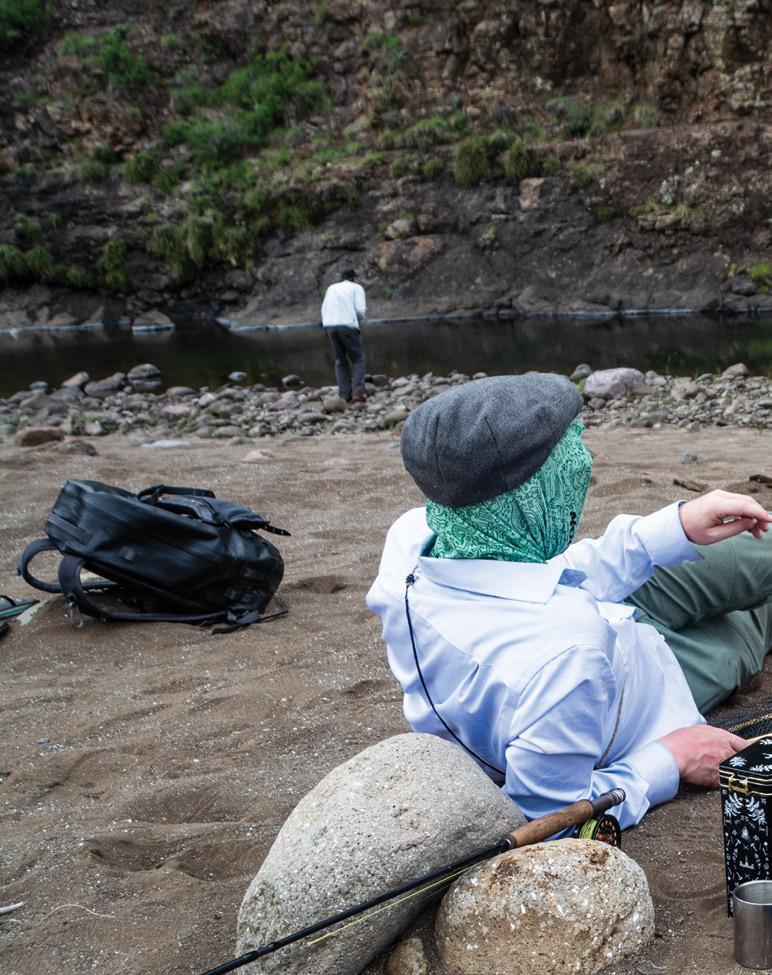
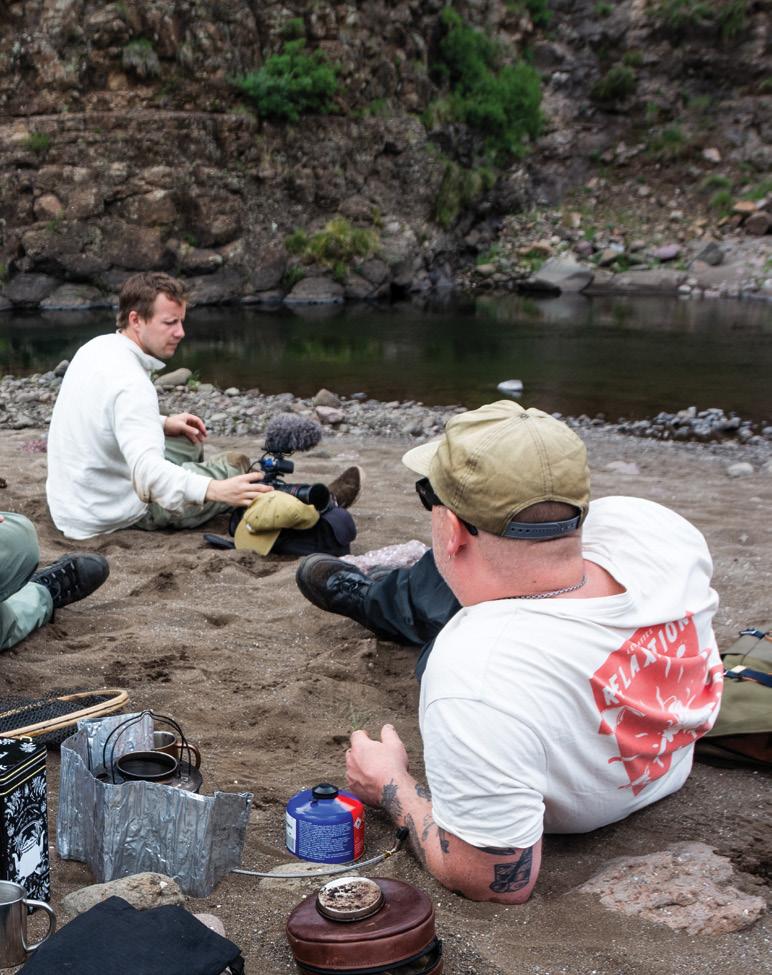
Suddenly the frequency of the jet engines changed. We were 30 000 feet above the Sahara Desert. The flight attendant looked unusually stressed out as she passed me. I’m not really comfortable in the air, and it’s a pretty long way from Stockholm to Cape Town. But neither my Norwegian friend, Håvard Stubø, nor Markus Lemke, the Arctic businessman from Swedish Lapland, seemed to be bothered about the aircraft’s ability to stay in the air. They looked bored.
At the airport, a tall, handsome young man with shimmering long brown hair smiled towards us. Matthew from The Mission would turn out to be a treasure. A little past midnight he dropped us at the hostel in Cape Town. We needed proper sleep but, among fishermen you don’t want to be the one asking for longer mornings. Four hours later Matt was back and without a problem he drove us towards the mountains (though the wheel was on the wrong side of the car, and the road was full of idiots driving on the wrong side).
In the foothills of the Hex River Mountains in Mitchell’s Pass, microbiologist Leonard Flemming stood with his rod rigged waiting for us. We were late, and that had nothing to do with Matt. Before we reached the river we all understood that Leonard was a real heavyweight. He wasn’t one of those people who mastered fly fishing talk just to be a part of the community, he knew fishing for real. We lined up behind Leonard and the hierarchy was set as we entered the valley.
I’m very used to walking along rivers, but still it felt unfamiliar. The lush green line carved in the dry hills gave me the sense of being fake. Two days earlier, I had shovelled snow from my porch. We pushed upstream while blind-fishing one pool after the other. Our friend from home, the brown trout, was supposed to be there. In every new pool I expected to spot one. But nothing. Håvard, Markus and I agreed that the river was too warm, the trout were further upstream. We talked in Swedish so Leonard wouldn’t correct us. During the mandatory coffee break I took a nap and woke up to the sound of Håvard shouting. In his hands he held a little perch-looking fish, I recognised it as an American. We all caught smallmouth bass during our walk downstream, and celebrated with craft beer in the parking lot. I don’t know the difference between beer and craft beer, but said nothing. It was a great first day in Africa.
Cederberg
After a good night’s sleep we regained normal brain function and started a lengthy drive into the South African outback. With Matt once again behind the wheel we rumbled along dusty gravel roads through the spectacular landscape of the Cederberg. In the bottom of a deep gorge, a little brown stream was hiding in the bushes. I could imagine David Attenborough sitting there on a rock saying,
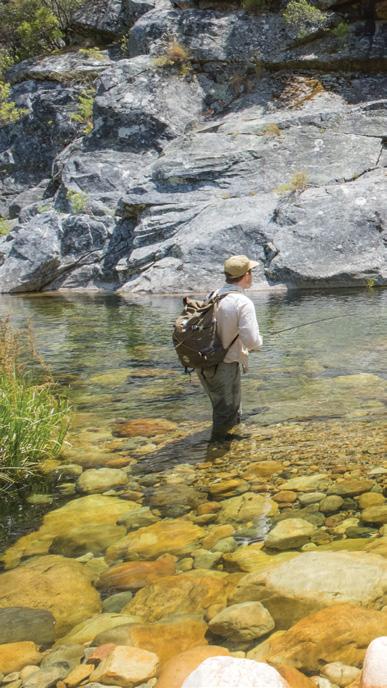
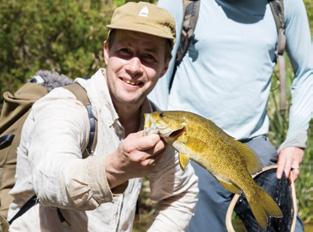
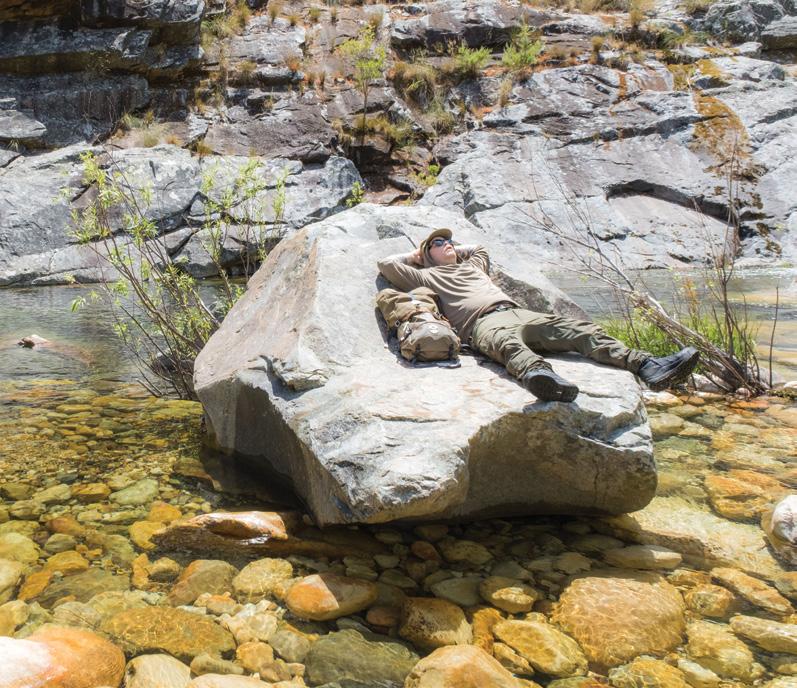
“And behind me you have the world’s most poisonous snake.” Leonard and our new companion, Platon Trakoshis, would confirm my suspicions. We were in snake country.
The fishing reminded me of my teenage years as a dedicated angler, but instead of a bobber I had an indicator and instead of a worm I had a nymph. Håvard was the first one out. Leonard suddenly told him to strike. We didn’t understand anything. We had all been watching the indicator. Apparently the small vibrations were a take and you were supposed to strike super-fast. After a while Håvard had a new species in his hands, the sawfin. When we had gotten a grip on the fishing, the river provided us with golden souvenirs. Markus was the first one to catch the Clanwilliam yellowfish. Then I followed in his footsteps. Though we all were beginners and did exactly the same thing, Håvard still

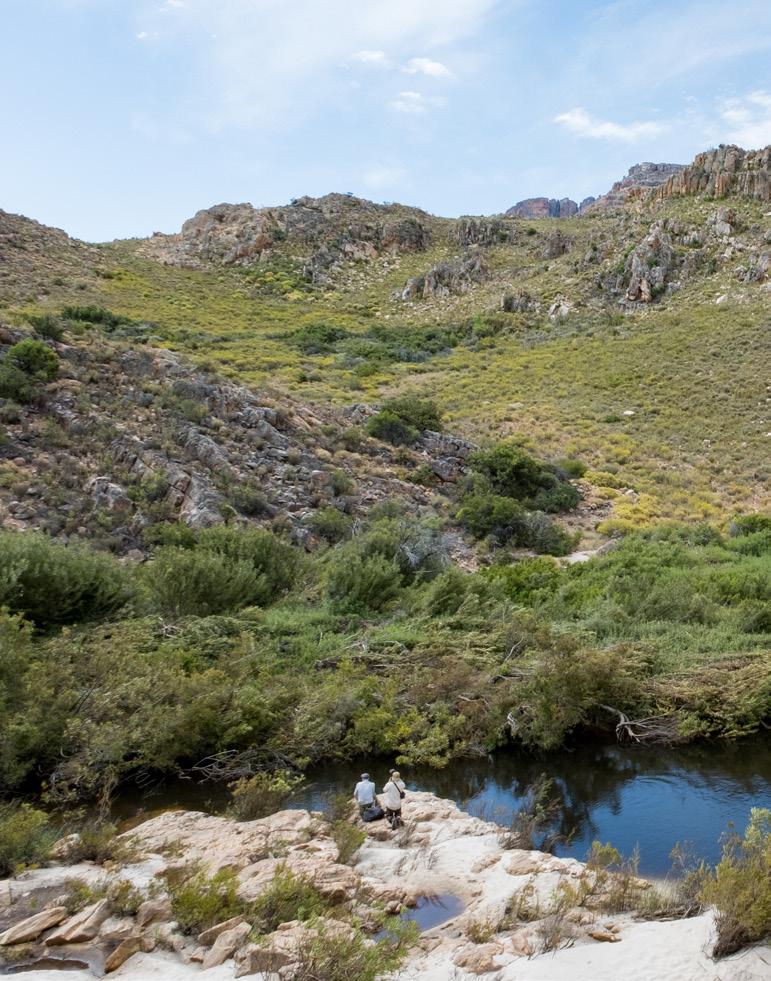
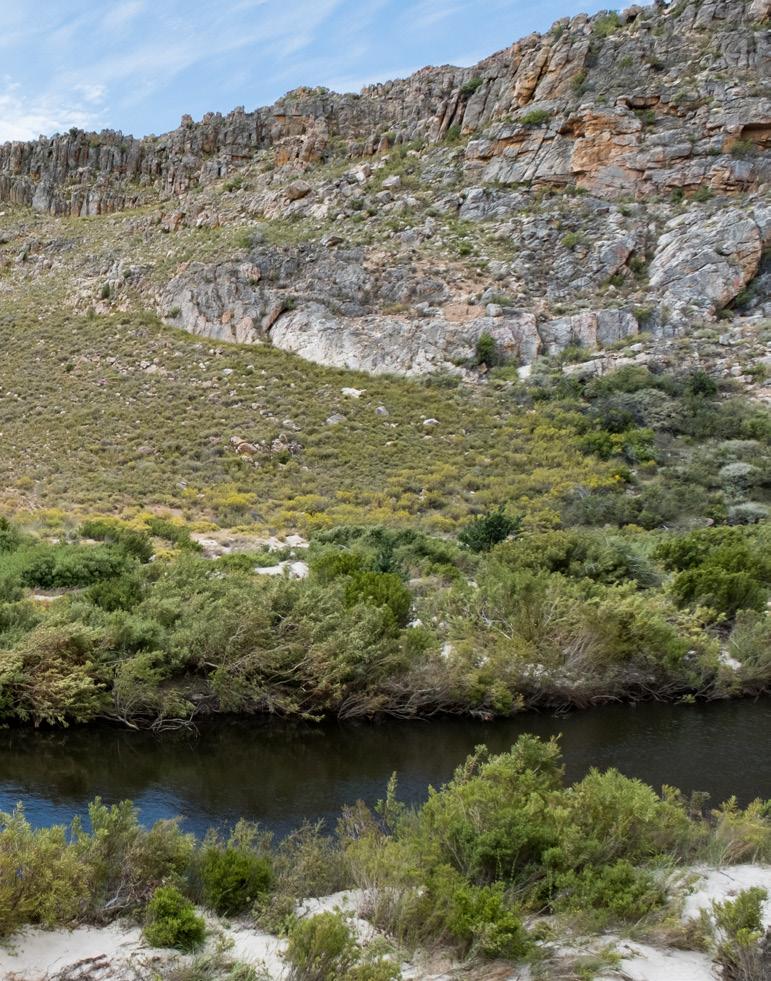
“AND BEHIND ME YOU HAVE THE WORLD’S MOST POISONOUS SNAKE.”
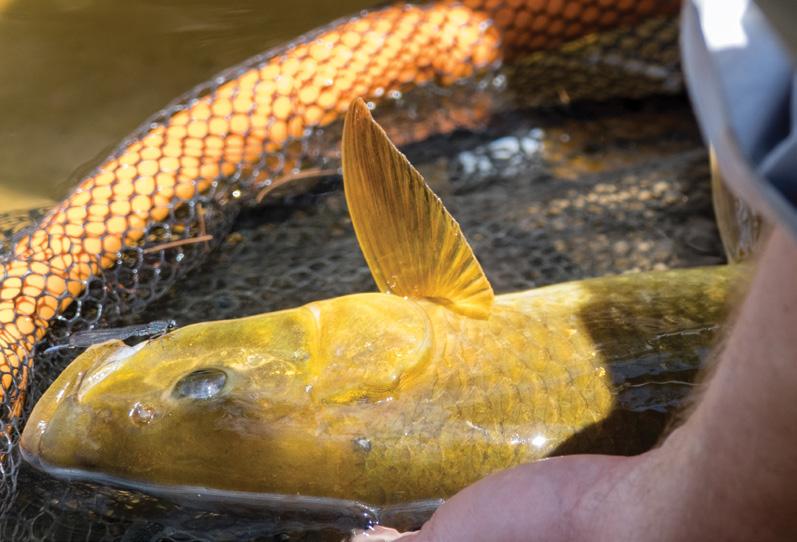
“THOUGH WE ALL WERE BEGINNERS AND DID EXACTLY THE SAME THING, HÅVARD STILL ENDED UP WITH THE BIGGEST FISH, LIKE ALWAYS.”
ended up with the biggest fish, like always. As he held that golden trophy in his hands I could swear that Leonard gave him a silent nod of acceptance, like he was saying, “Alright, you are one of us, the big fish people.”
Catching fish is good for the group dynamic, and we caught lots of fish. Matt landed what I assume was a very nice sawfin, twice as big as the other one we had caught that day. Markus introduced Leonard to the art of Kokkaffe, traditional Swedish coffee. It looked like a friendly gesture, but I know my friend better than that. He is, after all, “the Arctic businessman”. He was introducing our coffee brand, Lemmel, to a new market. The rest of the day we spent looking for rising fish, apparently the Clanwilliam could start to rise in the evening, but the evening came and the Clanwilliam did not rise.
The next day we found ourselves in a new group, the safety of Matt was gone, and Leonard had left us without a leader. In their place we had a relaxed session on one of the Cape streams with Matt Gorlei and Nick van Rensburg from Flybru, and their friend Ryan Janssens. They introduced us to rainbow trout fishing, one fish in each pocket they said, and let their flies drift over. After just a minute we got to see one of the inhabitants of the river. They caught several rainbows while Håvard and Markus sat on one of the round rocks with their eyes fixed on the river. We politely explained that when it comes to dry fly fishing, our rulebook doesn’t allow us to cast unless we can spot the fish or see a rise. We felt ungrateful, but some rules you can’t break even if you are on the other side of the world. A windy day passed with lots of coffee. In the evening we
showed our film, A Not Too Steady Flow of Mayflies for the fly fishing community in Cape Town. I felt like Rodriguez in the Oscar-winning documentary Searching for Sugarman Unknowingly, we had an audience in South Africa. The place was full of enthusiastic friendly fly fishers. One guy stood out in the crowd. A tall, skinny, weathered ginger with the eyes of a 15-year-old boy. Brendan “Bod” Body, our companion for the rest of the trip.
Karoo
When the sun rose we had already been in the car for an hour or two. In a long line of trucks it felt as if we were driving along a railroad through the Karoo desert. Bod said something about trucks replacing the broken railroad infrastructure because of the lack of competent leadership, before he moved on to the next subject. He was a human radio, and we loved the channel. Sometimes Markus and I talk about the fact that fly fishers talk way too much about fly fishing, but Bod wasn’t like that. Skateboarding, Israel, Palestine, climate change, pets, ANC, films, music and the clarity of the night sky over the Orange River. The line between wealth and poverty in this country is blatant, Bod said as we passed a township. During our drive we had seen a few of the tin-shed villages already, I hadn’t seen that kind of poverty before and I didn’t know what to do with the realisation that we had crossed the world in order to catch a fish. We were extremely fortunate to be measuring our happiness in the number of fish rising to a dry fly.
When the sun reached the horizon again the scenery started to change. As we left the desert, the green colour returned to the landscapes. Shortly after night fall we reached Ficksburg, a small town on the border of the mountain kingdom of Lesotho.
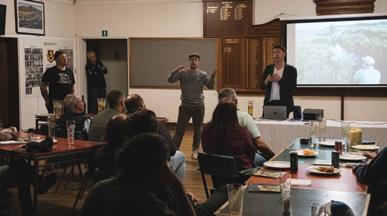
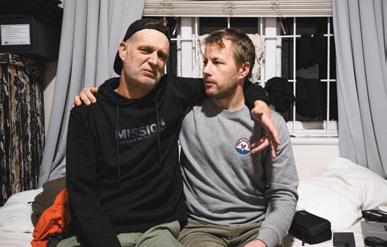
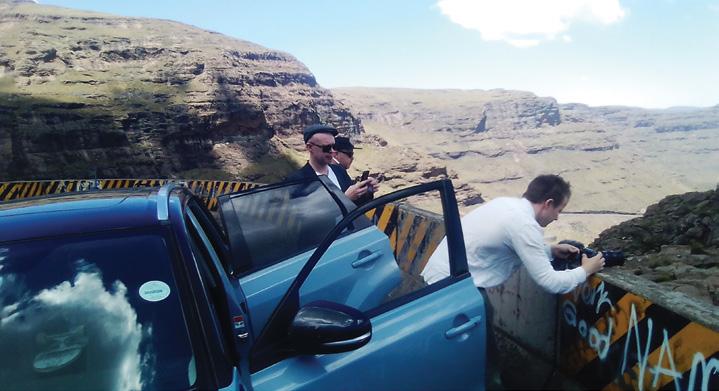
Lesotho
Small farmhouses everywhere, sheep and donkeys along the road as we climbed the green hillsides on a surprisingly good road. China has paid for it in some way, Bod said. We made a few stops to take in the view, smoke cigarettes and rest the brakes, before we rolled on to Katse village. The road went from perfect to adventurous, bumpy dirt before we reached our final destination, the pristine Bokong River and the Makhangoa Community Camp* (MCC)
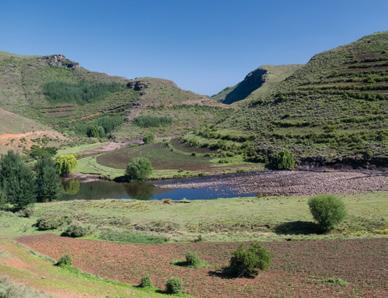
When fishing at home we are used to sleeping in mosquitofilled tents and eating poorly in Arctic conditions. This operation run by African Waters (africanwaters.net) was something else. After being shown our rooms in the MCC, we realised that, for the coming days, we would be treated like royals.
No matter how nice the rooms were and how good the food they served in camp, our interest lay elsewhere. Riley, one of the guides in camp, talked about the number of fish in the river in a laid-back, confident and almost nonchalant manner. At the same time he was warm and friendly. Riley had what we in Sweden call “storkukslugn” (the calm of having a large dick).
We never learned about the actual size of his dick. Riley’s confidence perhaps came from the knowledge that he was a guide in a river that fulfilled every visitor’s dream. That worried me. My mission was to make a film about this fishing. I find the fisherman’s reaction to catching a fish more important than the size or the number of fish, and the joy of catching fish is in direct correlation with the number of fish you catch. I suspected I would need to film the first fish we caught in order to get a good fishing scene with maximum excitement. Soon we stood there gazing into clear water at the very first pool of the river. In the golden evening light a fish broke the surface. This was our first encounter with the smallmouth yellowfish.



“THE LUSH GREEN LINE CARVED IN THE DRY HILLS GAVE ME THE SENSE OF BEING FAKE. TWO DAYS EARLIER, I HAD SHOVELLED SNOW FROM MY PORCH.”
Håvard’s diary from that day
Hands shaking, I put my dry fly, a size 14 Balbyter, 2-3 metres ahead of the fish. A few seconds later, the fish smashed my fly violently. My strike was way too hard, and the fish broke me off immediately. Damn! Amateur hour again. The guides had warned us that the yellows were seriously powerful fish that could easily snap the leader, but controlling your nerves in these situations is easier said than done. What’s worse, that was my only Balbyter**. A few minutes later, we spotted another big yellow cruiser. I covered the fish quickly with an ant pattern, but it flat-out refused the fly. I went through several different dries, including a big hopper and a small Klinkhammer. No luck. Picky yellow bastards. Strangely enough, the preferred fly turned out to be a tiny hi-viz mayfly spinner from Headhunters Fly Shop in Craig, Montana. Dry fly fishing is strange sometimes.

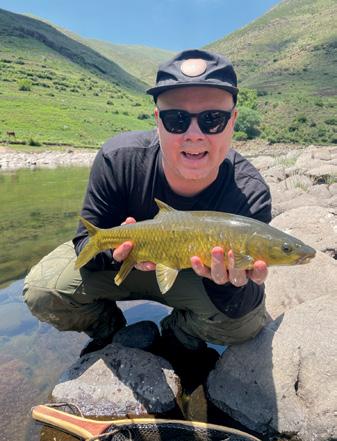
“WE WERE EXTREMELY FORTUNATE TO BE MEASURING OUR HAPPINESS IN THE AMOUNT OF FISH RISING TO A DRY FLY.”
The fish inhaled my American dry fly gently and took off in a blistering first run. Euphoria! An awesome fish, almost prehistoric-looking in its beauty. A real powerhouse, too, probably somewhere between four and five pounds, deepbellied with broad shoulders. Gleaming gold with a tiny moustache. Darkness came creeping fast, and we made for a late dinner and a couple of cold ones at the camp.

The thunderstorms and heavy rain kept coming all through the night. The river got colder and slightly discoloured. We let some dry flies drift over the blurry shadows in the pool, but they wouldn’t rise. David from the local village upstream had followed us down to the river. I didn’t always understand his English, but I instinctively liked him. It seemed he was a friend to everyone. You either saw him laughing with people in camp or alone by the river constantly bouncing back and forth between solitude and social interactions. He suggested we put a dropper under the hopper in order to catch a fish. Markus politely explained that he would rather wait for the water to clear, smiled and gave David the rod. You go! David caught a fish proving that the hopper dropper was an excellent solution for the tough conditions. After lunch we exchanged songs standing in the back of the Land Rover driving up to the Makhangoa village. Just a few kilometres upstream a bunch of small houses were standing on a steep hillside. The villagers had gathered around the only flat surface, and on a bench in the middle an old man sat looking at us, smiling with his eyes but the rest of the face gravely serious. Bod, Håvard, Markus and I stood there for a while not knowing how to interact with the people of the village. Riley explained that we had to talk to the chief before we were allowed to interact with the rest, and so we did.
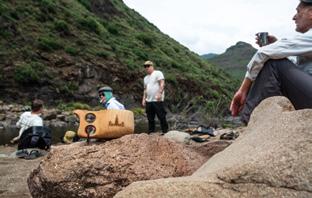

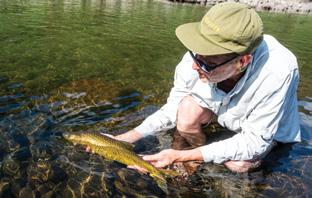
“Where’s your house, David?” I asked. A pretty steep walk later I was standing by a little cabin further up on the slope separated from the rest of the village. We stood there looking down on the village and the river beneath. I live in a very different village on the other side of the globe. Compared to David I was wealthy as fuck, living in materialistic abundance, but I wasn’t sure I was the winner. He had a sense of ease that I envied. Perhaps I just let my mind fill the gaps in our communication, but I recognised myself in him.
In the days that followed we really got to see what the Bokong River is made of. Gin-clear, stunningly beautiful and absolutely packed with big yellows. As you fish you’re
“AFTER A WHILE I DIDN’T KNOW WHAT TO FILM, IT WAS TOO LOVELY. THAT WAS AN ACTUAL PROBLEM FOR MY FILM.”
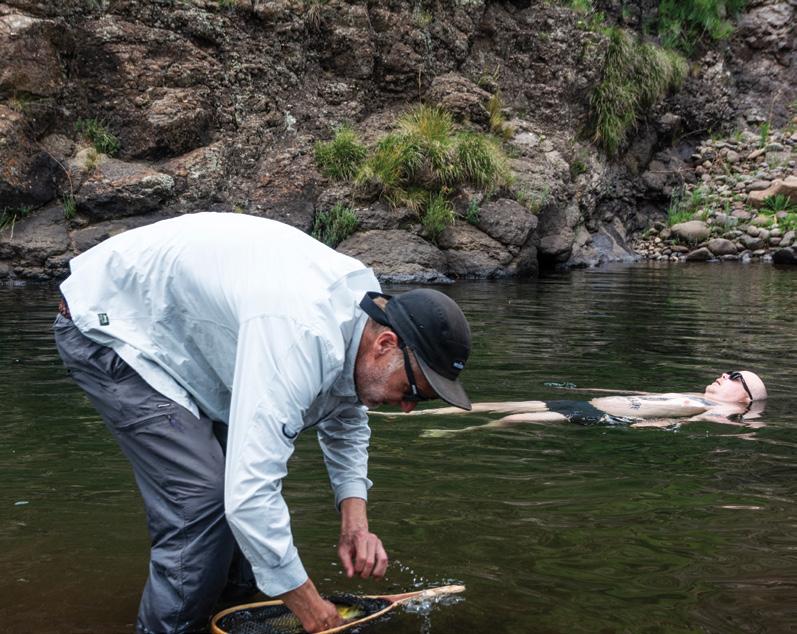
surrounded by tall green mountains, with horses, cows, donkeys and sheep grazing on the steep slopes as locals go about their business at a leisurely pace. We all caught more than enough yellows on dry flies – big beautiful fish that fought with true grit.
After a while I didn’t know what to film, it was too lovely. That was an actual problem for my film. There wasn’t much friction. One afternoon Bod and I realised there was a little strip of concrete outside one of the cabins. Bod fetched his skateboard and we played a game of skate, Berrics Rules***. That’s when it hit me how much older Bod was than me. The way he positioned his front foot when making “impossibles” made it clear that he had started skating before I was even born.
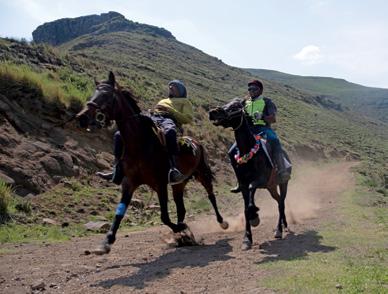
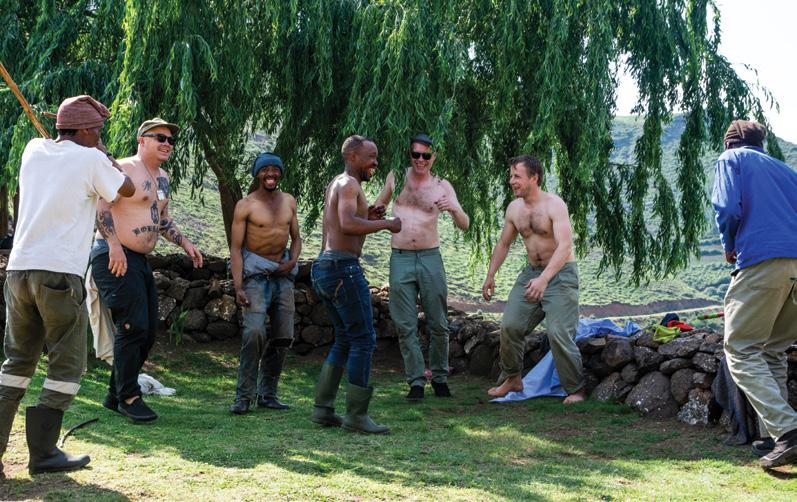
“WE FELT UNGRATEFUL, BUT SOME RULES YOU CAN’T BREAK EVEN IF YOU ARE ON THE OTHER SIDE OF THE WORLD.”
After another long drive we found ourselves in Johannesburg for our last screening. It felt slightly surreal to meet people who have been following our stuff online for many years. Some of them had seen all our films. After the tranquillity of Lesotho, the monster city of Johannesburg was kind of hard to take in. We got the sense that the city was a bit out of control, every house looked like a Swedish prison, surrounded by electric fences.
Here and there Bod pointed at places and told stories, mostly skateboarding stories from his time growing up in Johannesburg. Ten years ago he and the rest of the skateboarding community had left for Cape Town.
At the airport we shared one last meal, then we watched the tall skinny ginger walk away. I felt certain we would meet again.
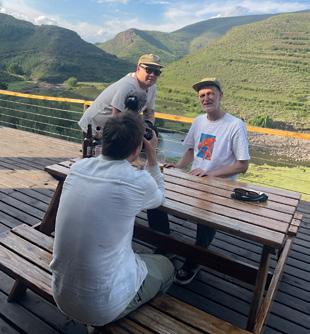

*Makhangoa Community Camp
An initiative between the local community and African Waters, the MCC on Lesotho’s Bokong River is a brilliant example of sustainable eco-tourism in action. To find out more about this fantastic fishery with its 20km of incredible yellowfishing (plus big brown trout and rainbows too), as well as the Indifly-backed solar project and the *Bokong’s River Rangers, visit africanwaters.net.

**The Balbyter
“This thing has as many triggers as Pamela Anderson jogging down the beach in a thong. Fish can’t help themselves, it just screams ‘ant!’” Gordon van der Spuy describing the Bokong River’s most infamous pattern designed by Ed Truter. For more info on this fly, visit themissionflymag.com/the-balbyter
***Berrics Rules
Not to be confused by the way Game of Thrones character Lord Beric Dondarrion lived his seemingly immortal life, “Berrics Rules” are a set of rules designed for judging a game of skate (skateboarding competition), so named after The Berrics, a private indoor skatepark owned by professional skateboarders Steve Berra and Eric Koston.
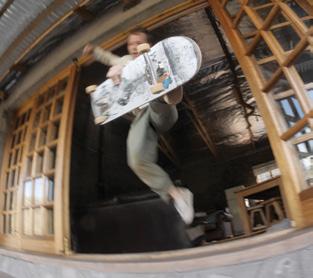

Marbaten/Marbatho
For the Lemmel crew, “Marbaten” is the name given to a mythical place of good fishing. Think Shangri La, but for fish. Combine “Marbaten” with Lesotho and you get Marbatho, the name of the film Rolf made about this trip. youtube.com/@RolfNylinder



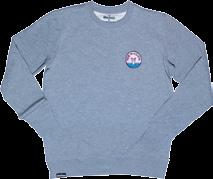


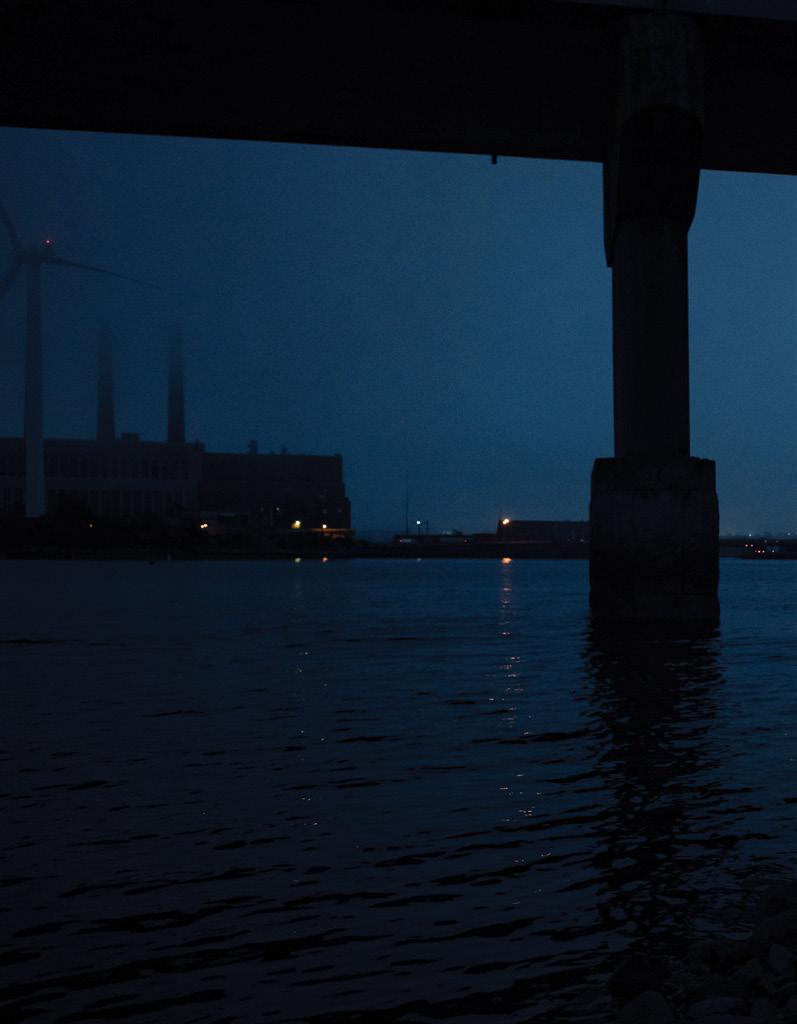
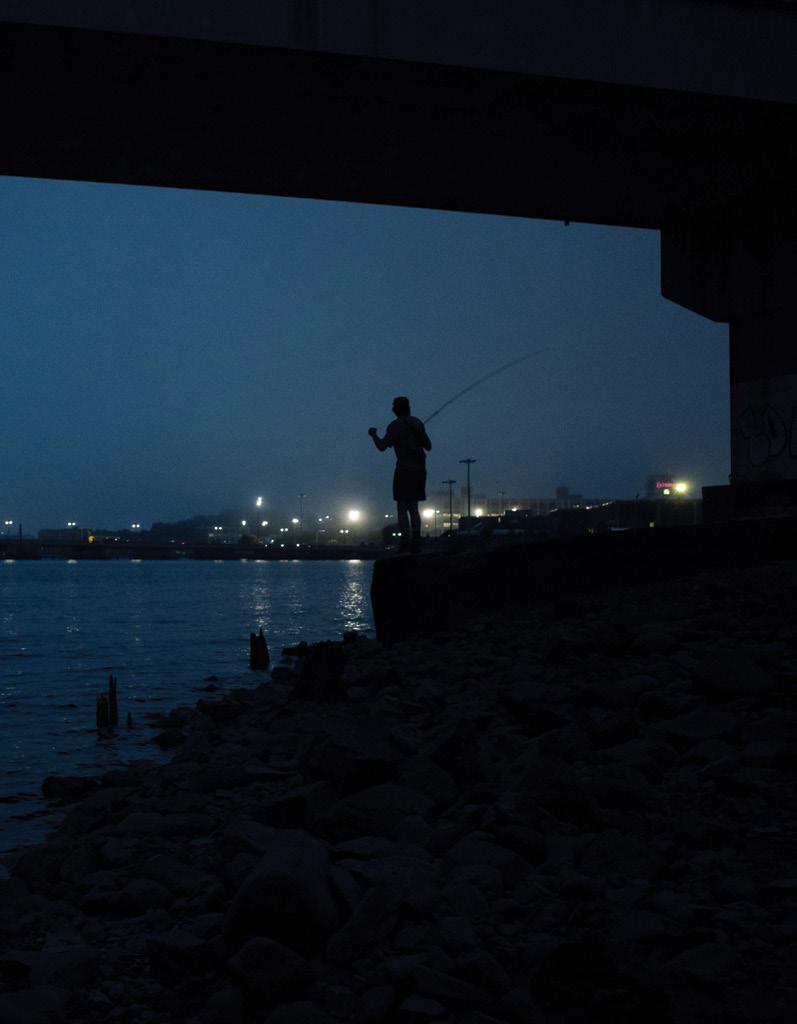
AFTER TRANSPLANTING HIS LIFE FROM SOUTH AFRICA TO BOSTON, USA FOR WORK, WHEN LIFE GETS HARD JEFF TYSER FINDS COMFORT IN A STRIPED BASS FISHERY HE HAS DREAMED ABOUT SINCE HE WAS A BOY GROWING UP IN JOBURG.

The Friday night lights dance hypnotically on the surface of the bay, like an upside-down fever dream. In the city above the surface –inside buzzing bars and bowling alleys, at 24-hour Dunkin’s and all-you-can-eat seafood buffets –families, friends and lovers converge.
Below, wader-clad and waist deep in the fever dream, a lone figure wields a 9-weight, invisible to them all. An alien chasing natives. An outsider in every sense, seeking solace in this strange new place in the only way he’s ever known how.
“BOSTON IS ONE OF THE WORLD’S
In the old times, before the relentless assault of content the internet now vomits over us, fly fishing dreams were born in the magazine aisle of the local CNA. The glossy spreads of Fly Fisherman, Field & Stream and Fly Fishing in Saltwaters contained images and tales that would, in no small part, shape my identity and the trajectory of my life. It was here, after school one day, that a photograph of a fly angler lifting a huge striped bass from the surf was burned into my mind.
Cut to 2022. An opportunity to join a Boston-based ad agency lands unannounced in my inbox. Weighing up a move to this corner of New England, one might consider the storied history, iconic brownstones, Ivy League schools, mom and pop trattorias, lobster rolls and people who talk like Ben Affleck. I see an opportunity to wade in the footsteps of Jack Gartside. I picture salt marshes, windswept jetties, 12-inch Fleyes and blitzing stripers. And so, the decision is easy. Much of what follows, however, is not.
In a world more connected than ever, I am duped into underestimating the profound impact of physical distance. Nearly everything that has ever felt familiar and safe suddenly feels impossibly far away. Beneath the veneer of starry-eyed wonder and new-guy exuberance, more sinister undercurrents swirl: self-doubt, exhaustion, grief and loneliness.

In my new job, things once taken for granted – a reputation, trust, colleagues who laugh at my self-deprecating jokes – become distant memories. Imposter Syndrome begins to consume me. Corporate America’s questionable interpretation of a healthy work/life balance threatens to derail me.
Crutches take many forms. Mine has always been standing in water, with a fly rod and a box of flies. Fortunately, around these parts, there’s no shortage of water in which to stand.
Wikipedia and the local bar flies all agree: Boston is one of the world’s great sporting cities. They cite the fabled Red Sox and Patriots dynasties, the aura of Fenway Park, the Tom Brady Effect and the countless championship rings. The city is less commonly talked up as one of the world’s great urban sport fisheries. I’ll go out on a limb here; that’s exactly what it is.
A quick glance at the satellite image of Boston Harbor reveals a lifetime of exploration – large rivers, tidal creeks, hidden salt ponds, marshy back bays, mud flats, sandy beaches, boulder fields, mussel beds, a veritable archipelago of small islands and, plausibly, the odd suitcase filled with severed limbs. Through it all swims The Great American Gamefish, the crab-crushing, bunkerbashing, shrimp-slurping, gloriously enigmatic striped bass.
“THERAPEUTIC
‘HABAH’ CAN ALSO JUST BE WICKED GOOD.”
Short on human connection, my relationship with these fish and their hunting grounds becomes heightened. They punctuate complex and confusing times with moments of clarity, familiarity, meditation, comfort. Even companionship. It’s a cliche, but when the stripers roll back into town each spring, it does kind of feel like being reunited with old friends.
But, it’s not always that deep. Therapeutic benefits aside, fly fishing the “Habah” can also just be wicked good. Its sheer scale, the diversity of habitats and the huge tides are overwhelming at first. Put in the time, however, and she’ll begin to divulge her secrets.
Late one afternoon, paddling the upper reaches of a small suburban estuary at the top of the tide, I notice a party of egrets camped in the flooded margins. The birds betray the presence of a hapless school of silversides, seeking whatever shelter they can find. Every so often, a bow wave materialises at the channel edge and accelerates aggressively through the grassy shallows. This sends terrified sprats spraying into the sky.
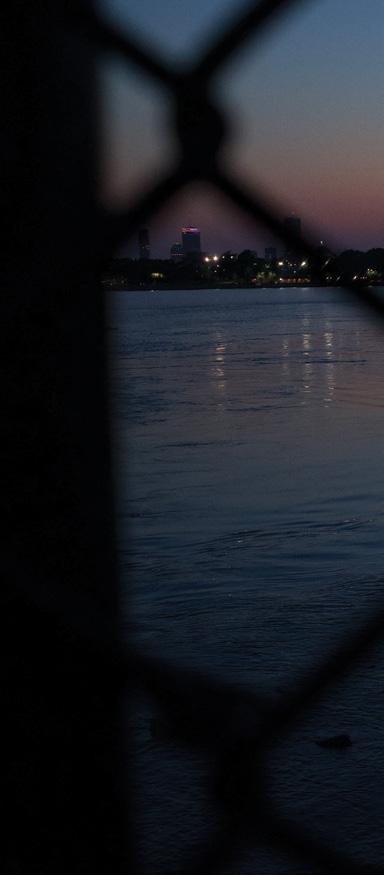
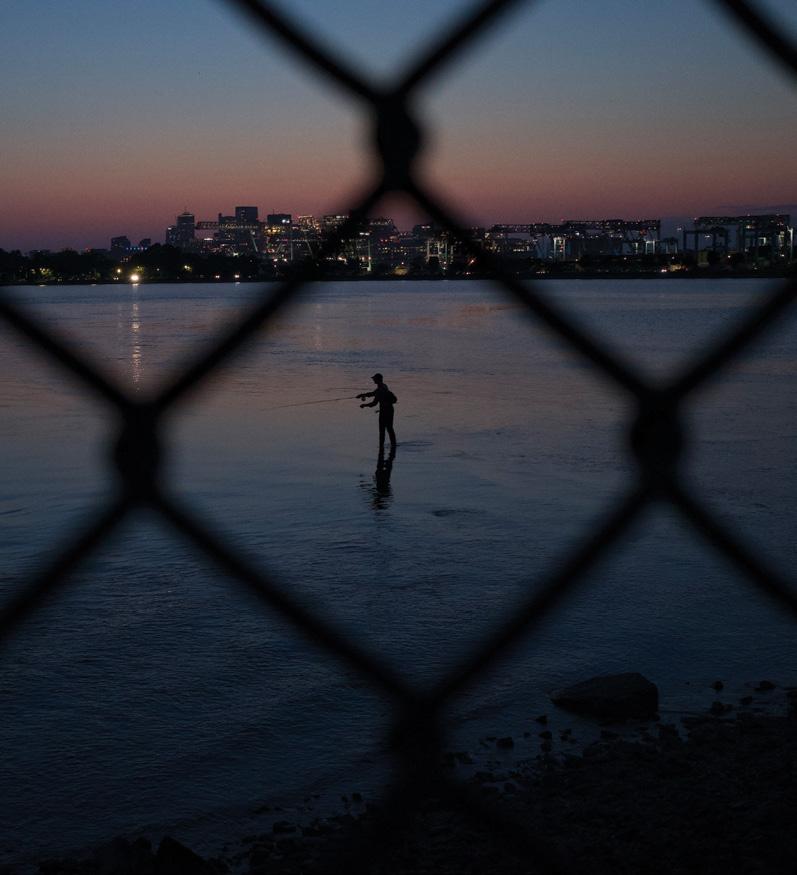

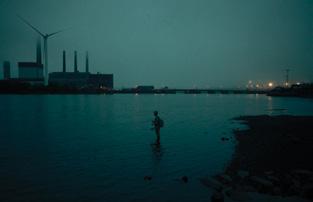
The lone figure in the bay beneath the city sends a large Bulkhead Deceiver into the night. As he waits for it to sink to the desired depth, his mind strays.
He can probably now call this his home water, he thinks, even though this place is yet to feel like home. He remembers the schoolboy in the magazine aisle of the Parkview CNA, who is now living one of his dreams. In the darkness, that’s something that is easily forgotten.
It strikes him that it could be a good idea to write some of this down. Maybe it will be a story worth reading. If nothing else, it might simply affirm that this city and its waters, for now at least, aren’t the worst place to be.

While taking in all the skyscrapers, fancy cars and the general otherworldly experience that Dubai is, The Mission’s Matt Kennedy found that the true wealth of the desert city was in its prolific shoals of queenfish that local outfitter Ocean Active Fly is tapping into.

Thanks to my father, my brothers and I have been fly fishing ever since I can remember. From trout streams in the high altitude regions of South Africa to family holidays dedicated to fabled stillwaters, fly fishing was just what we did.

Me, the youngest, age 4 Andrew, oldest, age 13
Andrew also worked in fly fishing for a bit, manning the shop at Frontier Fly Fishing in Joburg during Covid, but these days he lives in Dubai, where he flies bigass planes for a living.

So, it was probably not that surprising that 20 years down the line I now work for this fly fine fishing magazine you hold in your hands (or view on a screen).
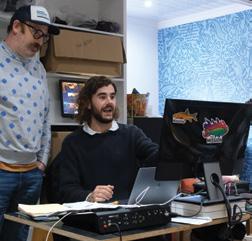
Matt, shrrrfuckup.
And check what I’ve been catching from my SUP!
Perks of the job include:
- office dogs (flatulent).
- I get to fish (and legitimately call it work).
- I literally get to talk about fly fishing all day (and my boss doesn’t even mind).
In his time off, he’s been fly fishing for Queenfish.

Meanwhile, 7650km away in Cape Town, South Africa, I’ve been learning new techniques, picking up skills, and growing my species count. My main saltwater target? Garrick aka leervis, which with its lateral line and general shape looks a lot like a queenfish, only less blue. Andrew kept telling me that I had to get out to Dubai to experience the queen scene (and see family...of course).

So, when el cheap-o plane ticket came up, courtesy of being related to a pilot - I took it.
The editor says, “you never regret a fishing trip.” I do however regret that extra whisky.

And soon I landed in the desert city of my fishy wet dreams...


ever been to.


And that’s before I even met Nick Bowles’s Ocean Active Fly crew, the guys klapping queenfish, cobia, golden trevally and other species right there in the shadow of the Burj.
Nick – Head Honcho
Ramesh –Skipper and guide
Make sure you can doublehaul boet.
Mohammed – Co-Head Honcho

My favourite album? Nirvana’s Nevermind.
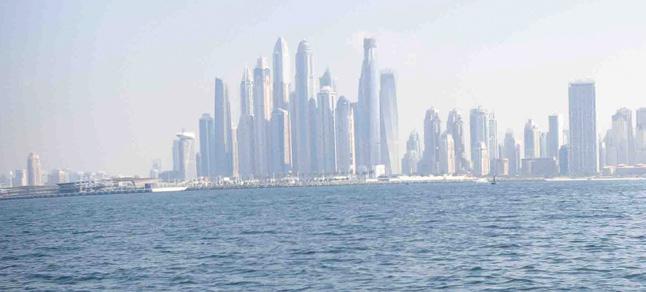

Before becoming a queen er... king, I had to do the Dubai thing.
I went to the top of the Burj (tick)

…Jrrrfok, I feel like Batman.
Smashed some local chow (tick)

Ya Allah! Welcome my friends.

I met a camel (tick)
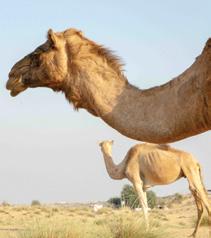
Contrary to the stereotype, my tick situation is very much under control.
And soeked for spice at the souk where Andrew was offered special crotch spice

This spice is like Viagra! Just one sniff and you’re stiff!
What’s the difference between Google Chrome and Manchester City?
Chrome has history?
Dubai “done” it was time for the main course. After all, I was here for one thing, and one thing only. A fishing mission with my brother.
Finally at sunrise the next day, we were on the water. Even though it was winter, the sun felt unrelenting, as though we were jetting around in a microwave.

“Follow the birds” were the instructions from Nick and Ramesh. In theory, where there are predators above, so too are there below.

The last time I was chasing birds, I was sitting on a barstool in varsity. Da-dum-tss. Anyone...? Anyone...? Tough crowd!


Looks like it doesn’t get the joke in at least three languages
First things first - a massive reality check descended upon me. This was harder than I expected. For three hours I could not buy a bite!
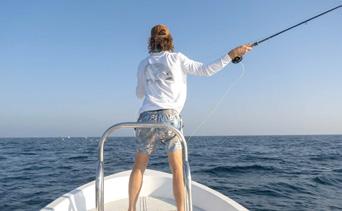
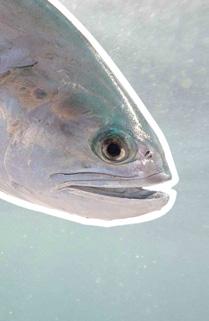
Jrrrrr you are kak at this.
The soft chirps and gentle reassurances coming from Nick, Ramesh and Andrew failed to improve my results.

No not yet, don’t strip yet!
Failing, attempt after attempt, I could feel the gravity of Ramesh’s judgment growing heavier. “Nevermind” he would say, again and again after a soft sigh. But I DID mind and I could feel that deep down he did too. Behind the blue glare of his Costas, a tear welled, and instantly evaporated with a fizz. He wouldn’t say it, but I knew what he was thinking. He, a grown ass man with a wife and kids and a successful career, was tired of having his hopes and dreams shattered by the inability of this South African
instructions.

Nevermind…
Somehow Andrew knew what to do. His queenfish game was strong. But while his intentions were good, the encouragement he offered me wasn’t helping.


Don’t worry Matt you’ll catch up soon.
I couldn’t understand what I was doing wrong. The more Andrew succeeded, the more frustrated I got. We were getting to the point where Andrew - a guy who checks the stock market on his phone, a bloke whose hobby is building model airplanes and who is a strong contender for the mantle of “whitest man alive” was THROWING GANG SIGNS at me.
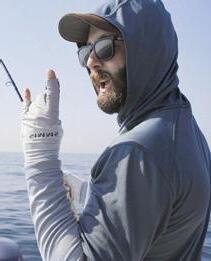
I’m on 10 fish! Haha!

Desperately in need of wise counsel, I consulted Nick for his thoughts.

You’re too stiff, relax your arse and slow down.
If I relax any more I’ll fall through my own poephol.
On a wing and a prayer, with a strip of the line (at the right pace), and a set of the hook (at the right time), I was on!
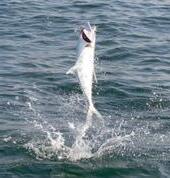
Should I change flies?

Do you want to try my rod?
After some words of encouragement (and a shift in the wind), I got my act together.

Just like that, the scales fell from my eyes and the fishing was easy and oh so good.
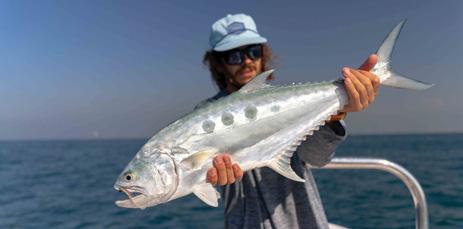
These things are slabs!
Nice beard homie. Did you know your earlobes dangle? For the record, this Desert Storm camo headgear suits your complexion.
It was local man Mo’s turn to chaperone us. The other half of Ocean Active, he’s the kind of guy you want to know in a place like Dubai, especially when looking for queenfish on foot. You see the action off the boat was brilliant, but we are Seffrican and wherever we can we like to catch fish on foot.

The action on the boat was almost instantaneous. “Andrew of Arabia” was hooking into fish after fish.

Yesterday gang signs, today local fashion, tomorrow maybe a barrel roll in the Boeing?!
The guy was on Cloud 9. In fact, I don’t think he smiled like this at the birth of his own daughter.
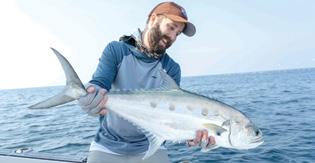
Even I was klapping it from the get go. Those hordes of aggro Queenfish chasing hard-stripped poppers were arguably the highlight of my fly fishing life thus far.
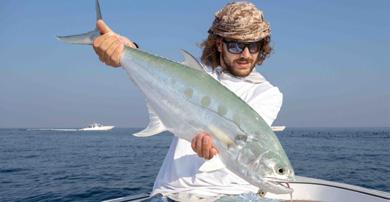

Wait you forgot to take my number!
Having caught more than enough fish, getting queens on foot would be the ultimate win. So Mo took us to a productive beach where he knew queens came into the shallows to hunt.
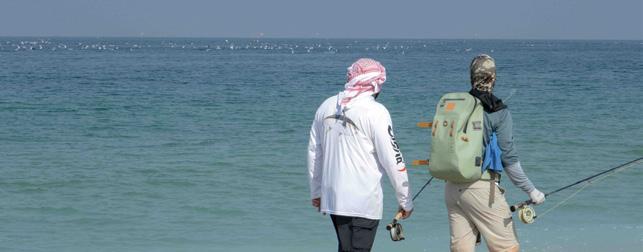
I think they’re coming closer! No... they’re going away. No wait? Ok, no, they’re going away.
I still reckon I can make that cast from here. I can do anything. Have you seen me break dance?
Attracted by the scent of Andrew’s secret souk spice or perhaps the confidence oozing off of him, the queens turned towards us and came in from the deep.
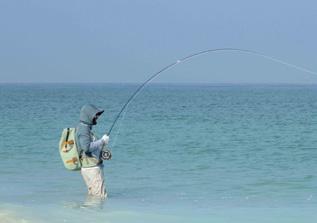
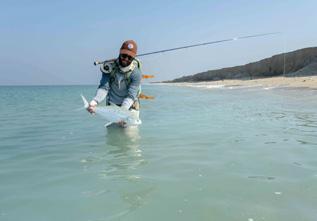
POSTSCRIPT: The attractions, the cars, the luxury (and the heat) of Dubai ARE truly mind-melting. Yet sitting in the desert on a giant dune with sand in my crack and dust in my eyes, my body still swaying from the motion of the ocean and my brain still trying to process the action of the past few days, I felt like the true value of this place had been revealed to me. If you stand at the top of the Burj, it’s a few Ks over there to the left. Look for the birds. Slow down. And relax your arse.

What did Mo mean when he said my beard was O.K?
Keen to see rad slowmo queenfish eats in 4K? Watch the video of this story at themissionflymag.com A whooolleee newww worldddddd
This is a helluva bunker. Where’s my wedge?
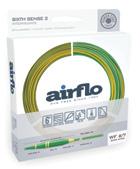
Back with a bang, Stealth has not one, not two, but three new rod ranges worth checking out (actually four, but we’re focusing on three for now). First up: the flagship Palladium Series If you are looking for a lightweight rod with a crisp action to deliver perfect presentations whether ye be laying down dry flies, precision plopping nymphs (a highly technical term) or throwing larger wind-resistant flies, this is your wand. Available from 4-6-weights (all 9-foot), it’s a fast rod built on a 40-ton carbon blank fitted with a combination of two Fuji alconite stripper guides and black PAC Bay single foot guides. The handles on the Palladium rods have been finished with AAA+ grade natural cork with cork burl trim and a lightweight CNC machined aluminium reel seat with 1K carbon insert.
Next up is the broad-ranging Icon series. Available from a 7’6 3-weight to a 9’ 6-weight, these rods are built on a four-piece, 30-ton carbon blank with AA grade cork grips, an aluminium reel seat with hardwood insert, two stripper guides and nickel double foot snake guides.
Lastly, there’s the medium-action Essence series, available in the most popular weights and rod lengths for South African river and stillwater conditions when targeting trout or yellows. Built on a four-piece, 24-ton carbon blank they feature A+ natural cork grips, an aluminium reel seat and two stripper guides, paired with black, double foot snake guides. The three models in the Essence series cover a range of applications from light tippet and flies to fishing heavier flies at distance and under windy conditions. All Stealth rods are supplied in a Cordura-covered tube in a cloth bag. stealthfishing.co.za
“NOT ONE, NOT TWO, BUT THREE NEW ROD RANGES WORTH CHECKING OUT.”
AIRFLO - SIXTH SENSE INTERMEDIATE
Planning on lurking with menacing intent around the weedy fringes of a few trophy dams this stillwater season? Then you probably need to add Airflo’s Sixth Sense 2 Intermediate Fly Line range to your arsenal. Designed to meet the specific needs of the stillwater fly angler, the long front taper excels with teams of flies, helping you nail that sweet spot between delicacy of landing (aka not casting like an orc) and distance — an essential skill for stillwater. With a low-stretch core that puts you in direct contact with your flies, it also offers you precisioncontrolled sink rates up to 8ips (Di 8). Available at fly shops across South Africa. airflofishing.com
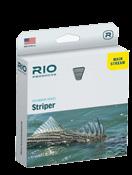
RIO - MAINSTREAM STRIPER FLY LINES
While we know that most fly fishing products are made with North American, European and the odd Australasian fishery in mind, there’s occasionally a product so perfectly suited to South African conditions that it might as well wear Rainbow Nation jocks like Faf de Klerk. Rio’s Mainstream Striper line fits the bill to a tee. Designed for cold water saltwater anglers (temperatures below 23°C, which is essentially the entire SA coast from the Weskus to Cape Vidal), they feature a quick-loading, easy-casting taper suited for throwing anything from delicate prawn patterns to big baitfish. Available in an intermediate density, they sink at 1.5 to 2 inches per second and are entirely clear for added stealth. farbank.com, xplorerflyfishing.com
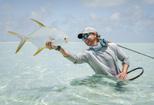
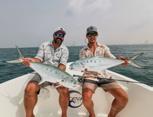
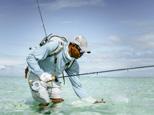
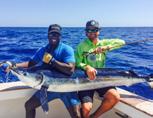
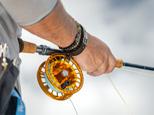






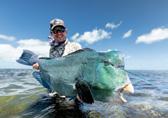





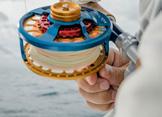


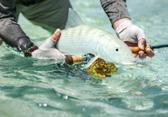

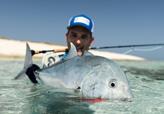
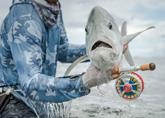





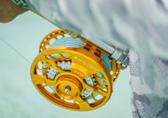

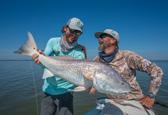



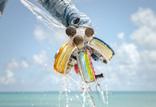
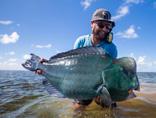


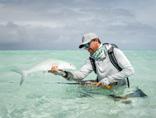
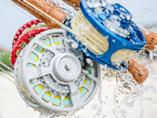



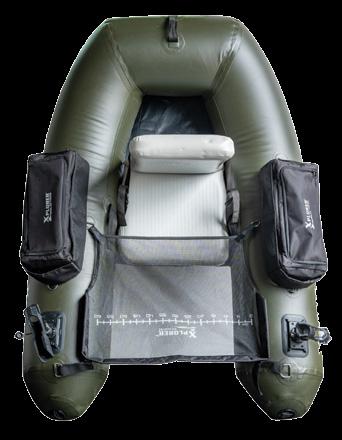

Hello nurse! With stillwater trout season in full swing, if you’re in the market for a new vessel, the timing of Xplorer’s new V Craft Pro release could not be better. In development for the past two years, this 9kg beast is stacked with features. For starters, it rides higher than other V boats giving you better visibility and assisting with longer casts, without getting affected by wind. Its lightweight design means it moves seamlessly across the water and packs away neatly into the boot of a car. Made from a durable, heavy duty 1000 PVC tarpaulin, it has three separate air chambers for added safety and summit valves for easy inflation. Dark olive pontoons with a black main bottom supply low visibility and stealth. Two removeable, pontoon-mounted rod holders that adjust 360 degrees; two over-sized removable side pockets for extra-large boat boxes and other gear; a large mesh stripping apron, nine stainless steel D-rings strategically mounted around the boat, three meshed webbing strap handles for portage plus bottom mounted, removable backpack straps for hiking into remote waters. Foot pump, carry bag and repair/service kit included along with a five-year warranty. xplorerflyfishing.com
Dealing with extremely temperature-sensitive fish? Then you might want to take a thermometer with you. Fishpond’s Riverkeeper Digital Thermometer is a nifty, compact, easy-tohandle IPX7 submersible-rated tool. With a rugged exterior, a large UV-filtered screen, a replaceable battery, and a durable aluminium probe, the Riverkeeper switches between °F and °C at the touch of a button (NB when dealing with American fish) and is built to withstand years of rigorous outdoor use. fishpondusa.com, frontierflyfishing.com
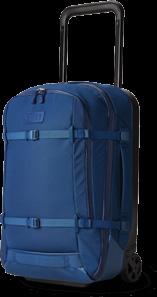
Fishing weekend away or perhaps an overnight business trip? This compact, feature-rich gem is a contender for the “ultimate carry-on” mantle. Made from Yeti’s rugged TuffSkin nylon, it also sports a moulded polycarbonate base designed to hold up against travel wear and tear. Featuring internal divider panels and mesh pockets plus a small packing cube for extra organisation and multiple handles for easy carrying, lifting, and loading, it’s available in South Africa in navy and black. yeti.com, upstreamflyfishing.co.za
“FISHING WEEKEND AWAY OR PERHAPS AN OVERNIGHT BUSINESS TRIP?”

Constructed to attach conveniently to any headgear, apparel, or accessory, the Lid Rig lets you rapidly and easily cut tippet or line whenever you need to. Springloaded with magnets (so... not actual springs that could fail), they come with a diamond-coated sharpening tool, a built-in bottle opener, a hook eyelet poker and a hook-sharpening groove. lidrig.com, flyfishing.co.za


YETI - PANGA 28L WATERPROOF BACKPACK
Now available in the same colour as a crab’s eggs or a really sunburnt Scotsman, Yeti’s celebrated Panga 28L Waterproof Backpack is an absolute doozy if you like to fish and get wet while your clobber stays dry. Thanks to a Hyrdolok™ zipper and Thickskin™ shell™, this pack™ is a 100%™ airtight™, waterproof™ gear™ fortress™, featuring™ ergonomic™ DryHaul™ Shoulder™ Straps™ for extra carrying comfort, while the removable chest straps and waist belt provide added stability and security while you move. An easy-to-access internal mesh pocket keeps your valuables safe, dry, and tucked away while an interior sleeve helps you keep everything organised. yeti.com, upstreamflyfishing.co.za
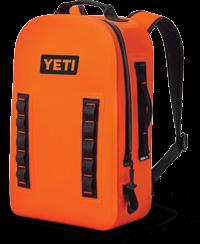
“NOW AVAILABLE IN THE SAME COLOUR AS A CRAB’S EGGS OR A REALLY SUNBURNT SCOTSMAN.”
The challenge with many waterproof bags is that to get at your stuff you need to do some relatively elaborate rearranging of the pack, unzipping and digging. Designed to be attached to a wading belt, a Panga backpack, or a Hopper soft cooler, Yeti’s Sidekick solves that problem by giving you easier access without compromising on protecting your clobber. Interior mesh pockets help you stay organised, while a waterproof seal (consisting of powerful magnets and an ultra-durable hook-and-loop closure) and RF-welded seams repel wetness. Yeti have just dropped two new sizes (6l and 1l) to go with the original 3l option. If you’re in South Africa, check them and plenty of other products out at the new outlet yetiafrica.com
“DESIGNED TO BE ATTACHED TO A WADING BELT, A PANGA BACKPACK, OR A HOPPER SOFT COOLER.”


If you liken the world of fly fishing packs, slings and vests to the dating world, then the Thunderhead Submersible Chest Pack might at first seem like a hardy, unassuming midget you’d never date, but once you got to know it, it would grow into a limpet-like romance for the ages. For the most part, on the water you just need a few things, like easy access to tippet, nippers, haemostat, a fly box and floatant. This is easily handled by this chest pack built with its waterproof, self-healing TRU Zip zipper main compartment closure. As a standalone item, it includes a net holster for long- or short-handled nets. What’s that? You also want access to lunch, water, camera, a jacket, more fly boxes and the collected works of Depeche Mode? Those can all be carried in a backpack, because, in classic Fishpond modular style, this chest pack integrates with their backpacks, making it perfect for gear-light quick sessions or (connected to a backpack) for gear-heavy multi-day trips too. fishpondusa.com, frontierflyfishing.com
“PERFECT FOR GEAR-LIGHT


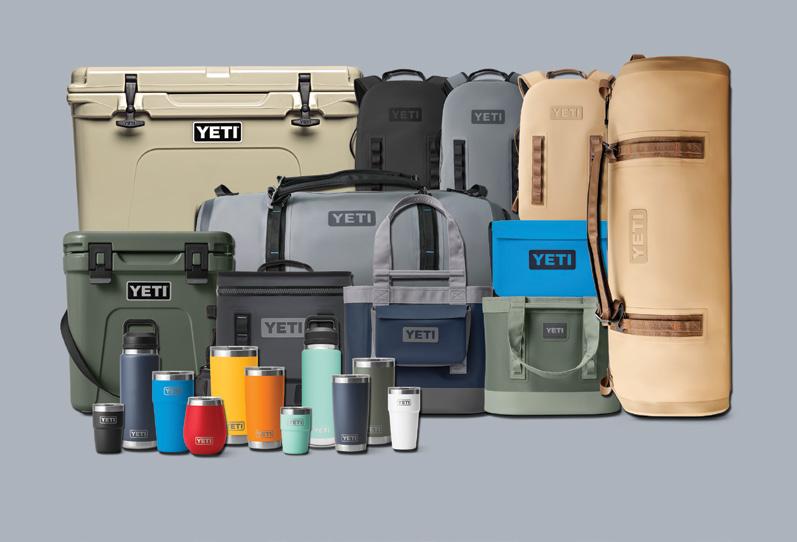

“AVAILABLE IN SINGLEAND DOUBLE-ROD VARIANTS.”

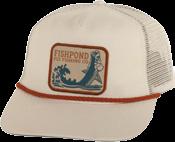
A massive tarpon jumps through the surf, your knees tremble and you set the damn hook as hard as you dare. That’s probably what is going to be on your mind (and on your head) when wearing this beaut of a Fishpond Gabon trucker cap until you actually make that scenario happen. Blood, sweat, tarpon jizz and tears not included. One size fits most. fishpondusa.com, frontierflyfishing.com

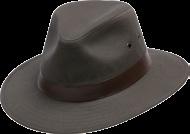


Marrying 70s golf pro steaze with Alpine ski instructor schmaltz, the oldschool stylings of this pom-topped beanie will let all the fish know you’re here for a good time. Made with soft, warm, and comfortable yarn, and available in olive/blaze and black/ grey, you’ll be identifiable from far off. One size fits most. Apologies if someone asks you for their four iron. orvis.com, flyfishing.co.za
After the runaway success of our mustard boonie hat, Mr Floppy, we present to you its charcoal cousin. Featuring a medium-wide brim, an adjustable drawstring and The Mission’s fly-stashing Flavour Saver patch in orange, we will not be held responsible if you never take it off. themissionflymag.com
If you believe Freud’s dictum, “C’est le chapeau qui fait l’homme” (The hat makes the man), which ultimately meant that he saw the hat as a symbol of repressed desire, then you might want to address your hat game. Does wearing a trucker mean you’re into tractors and incest? Will wearing a 6-panel communicate a deep-seated desire to make love to a skateboard? Only John Deere, your cousins, and your local skatepark will know. If, however, you choose a chapeau from top quality American hat-maker Henschel Hats, you’re communicating something else – that you are mature enough to want to wear a hat made for people who identify as adults. On the crushable cotton Sherwood a firm brim of 7cm keeps the sun out of your eyes while a chin cord keeps it in place come monsoon, moonshine, or sunshine. The cotton and polyester blend Voyager is also crushable and features a firm brim of 7.6cm, a chin cord, and the mesh crown offers additional ventilation for baking-hot days on the water. henschelhats.com, frontierflyfishing.com

For us, fly fishing is not a hobby, it's a calling. From the icy lakes of Patagonia to the azure depths of the Caribbean Sea, we've fished the waters of the world, seeking the ultimate fly fishing experience. We've pushed ourselves - and our equipment - to the limit. Because at Frontier Fly Fishing, we believe that there's no substitute for experience. So, whether you're planning the overseas fishing trip of a lifetime, or simply gearing up for a weekend away, count on us to offer you the very best equipment for your needs, coupled with solid advice based on first-hand knowledge.
If your idea of paradise is a good day on the water, drop in at Frontier - we believe in fly fishing.












Howler Bros made a name for themselves with out-there gaucho shirts (a sassy condor eating the entrails of a bouffant rooster on each side of your chest? Don’t mind if we do), but over the years they have steadily increased their technical garment range too. The HB Tech Hoodie is one you’re going to want to consider for those long hot days on the water. Made from a blend of recycled polyester and spandex, and sporting UPF50+ sun protection it also features thumb holes at the cuffs. Available in aqua and agave. howlerbros.com, upstreamflyfishing.co.za
“FOR THOSE LONG HOT DAYS ON THE WATER.”



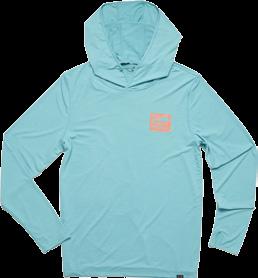
Forearms need coverage, whether because of the cold or the sun. The Mission, as always, delivers. Featuring Gerhard Human’s unique artwork and surprise details, Got Crabs (listed among the few things you can say both at an orgy and before the start of a flats session) is a super-comfortable long-sleeve T made for our die-hard crustacean fans. Then, we asked: Is it possible to blend in and stand out? We believe we may have managed to pull it off with The Foliage long-sleeve T in military green with our logo in orange on the chest. themissionflymag.com
“A SUPER-COMFORTABLE LONG-SLEEVE T.”



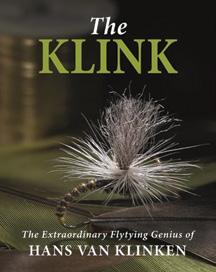
Klinks on the brain? Silly question – if you fish in the fresh for trout, yellows or any other dry fly-sipping species, like the Roman Empire, worms and the ANC’s proposed GNU, there’s a good chance you are almost always thinking about Klinkhåmers, Hans van Klinken’s famed dry fly. Forty years after it was created, Van Klinken has released The Klink, a book that dives not into just the journey of the fly, which we all fish and tie today, but into his life journey. Dig into 352 pages, illustrated with 675 colour photos covering a selection of his best flies with intricate steps on how to tie each one. flyfishing.co.za
“DIG INTO 352 PAGES, ILLUSTRATED WITH 675 COLOUR PHOTOS.”
On the subject of Klinks, Fulling Mill now offer a superb technical take on the Klinkhåmer. They’ve added a micro-tippet ring to the tail end of this classic fly so anglers can easily tie on a dropper. For anyone for whom Klinks and droppers are part of their bread-and-butter approach, this is genius. fullingmill.com, flyfishing.co.za

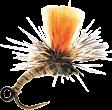
While this sounds like a devastating put down from a really mean girl, in the stillwater set these flies are held in high regard. Hugely effective, blobs can be fished on any line density and with a variety of retrieves. Trust us, your boxes require that sort of ticking. fullingmill.com, flyfishing.co.za
FULLING MILL - DANIEL’S UV POLAR JIG BLACK BARBLESS
Black, with flash, and legs, and a bead, on a jig hook..! Little wonder this is one of Dynamic Nymphing author George Daniel’s go-to searching jig streamers. It has tons of movement and UV highlights to trigger attention in any water type. Don’t be caught without these in your box! fullingmill.com, flyfishing.co.za

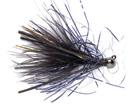
The latest products coming out Mbombela-based ScientificFly’s Gnarly Headz popper division is this comprehensive range of premium commercially tied poppers available in bass, jungle and saltwater applications. Designed to maximise your hook-up ratio, whether you are klapping largemouth bass in your local dam, heading to the jungle for dorado, peacock bass and other chunky specimens, or having a heavyweight bout with popper-eviscerating species like GTs in the salt, these should come along for the ride. scientificfly.com
“PREMIUM COMMERCIALLY TIED POPPERS AVAILABLE IN BASS, JUNGLE AND SALTWATER APPLICATIONS.”



Like swarms of little hiking boots on speed, when you look around as you drive it seems like the Suzuki Jimny has taken over South Africa’s roads (and back roads). Fans, ranging from students to professionals and outdoor-loving pensioners, are devoted to them for their compact simplicity, while we assume detractors point to their diminutive size as a downside. However, when you
see a brand like Alu-Cab go all in on kitting out Jimnys, you know that not only does that back up their popularity, but it means they are backed to go to far-flung places too. Alu-Cab’s range of Jimny-specific kit is extensive, but we have gone to the trouble of highlighting some favourites. Check out the full range of options at alu-cab.com .
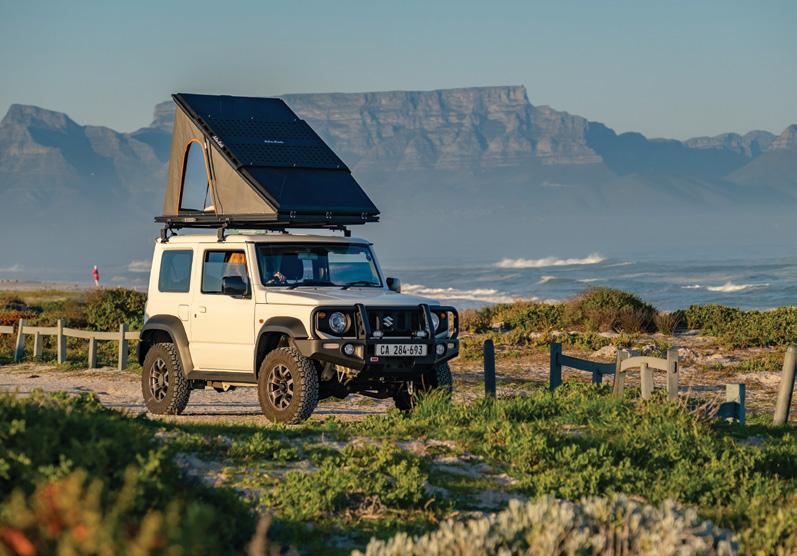
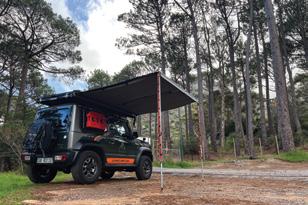


The Jimny version of Alu-Cab’s outstanding lightweight tents, the LT-50 pops up within seconds, you can keep your bedding inside, and it can carry a 30kg load up top. Made from lightweight, high-strength aluminium, it’s easy to install and transport and sports a streamlined design to minimise wind resistance while putting foot.
Hotter than Hades in the Richtersveld? You don’t need a massive 4x4 to cast a big shadow. With this compact, lightweight awning made from 300gsm polyester, you get 4.5sqm of reliable shelter in the most sweltering conditions. Ideal for SUV campers, it packs away easily, allowing you to get back on the road fast.
If you have run out of space inside or simply need somewhere to fix your off-road essentials, this versatile Molle webbing system has you covered. Whether you’re attaching recovery equipment, jerry cans, mini-maxtrax or other clobber, every piece of gear has its place.
There’s even more space inside a Jimny if you know how to take full advantage of it. This smart in-cabin rack allows you to optimise your space usage keeping essentials easily at hand.

Roadside coffee-making? Getting into your waders and need somewhere to place your keys? Flat surfaces are easily one of the most overlooked and underrated essentials when car camping, and this ingenious drop-down table with its incorporated cutting board is the perfect fix.
They call it a speaker box and yes, you can safely store your audio entertainment there during your drives, but its value as a simple storage box is the real win for us. Simply put, in South Africa in particular, a lockable storage box provides a secure place for valuable items (passport, house keys, a box of Alphlexos you stole from Alec Gerbec, signed Conrad Botes thong) especially when leaving the vehicle unattended most of the day to go fishing.

THE TANKWA MAT
If you’ve ever spent a freezing cold night on a sub-standard foam mat freezing your tits off and contemplating whether your mates would mind spooning (for warmth of course), you’ll understand the value of a good mat and this one looks like a doozy. Designed for rugged terrain, it features a dualfoam core and a durable RipTech outer shell, providing optimal cushioning and protection against rough surfaces. It functions as your mattress for the night and, with a smart fold, it also doubles as a handy seat against a rock or tree. The best bit? The built-in pillow pouch. Simply fill it with clothes (mmmm sweaty jocks) and you have a cozy camp pillow that will stay put through the night. Perfect for camping with limited space, the Tankwa Multi-purpose Mat weighs in at 1.6kg. livetankwa.com

WITH HEADWEAR, HOODIES, CREWS AND T’S WE’VE GOT YOU COVERED

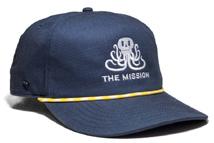
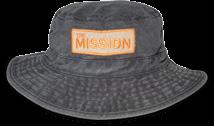
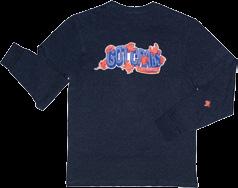






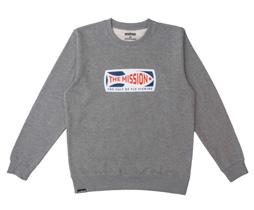

IN THE THOMAS & THOMAS ZONE 10’2 2-WEIGHT, GERALD PENKLER DISCOVERS A ROD THAT EXCELS AT EURONYMPHING, HANDLES STREAMERS AND DRIES, AND COMES INTO ITS OWN AT SNEAKY SIGHT-FISHING IN EUROPE AND SOUTH AFRICA.
Photos. Leonard Flemming, Gerald and Suzanne Penkler
Passed from hand to hand around the lounge, the Thomas & Thomas Zone was given the cursory wiggle, shiver and shake. There was general incredulity that something so long, slender and light could ever land a fish.
I have fished several 2-weight fly rods. They were generally small stream specialists with gentle actions and short 7- to 8-foot lengths. The T&T Zone 10’2 2-weight follows a very different design path influenced by the rise in popularity of euronymphing styles. Long, light and sensitive. And, while the tip can easily flick out a weighted nymph, the mid and butt sections have plenty in reserve for casting a longer line and fighting larger fish.
The overall finish of the rod is one of simplistic elegance. The cork is excellent, and the wraps are simple and clean.
Over the last season I have put it through its paces casting nymphs, dries and even some small streamers for various species finning about in rivers and lakes across two continents. I live in the Netherlands but frequently head home to South Africa.
Did I mention wind? Cowls pulled tight and leaning forward into a cold howling wind, Leonard Flemming and I trudged up a valley in the Western Cape. We walked silently, as the breeze swept away any attempts at conversation. Clambering through the fynbos and down into a sheltered bend in the river we tackled up. The small stream was flowing strongly and clear, although

with a light peaty stain. The wild rainbows would certainly be feeding although, in these conditions, I felt more confident in nymphing tactics than casting dries. Tackled up, the T&T 10’2 felt nicely balanced by the Hardy Ultralite featherweight reel and a Rio Technical Euro Nymph line.
Long upstream casts directly into the wind were impossible, so we employed stealth and fished close in. After attaching a sighter and a nymph with a 2mm tungsten bead I was ready. Sneaking up the side of the bank, I started using short casts working up the tail and towards the head of the pool. The head of this particular pool has a deep seam and undercut bank which always holds at least one speckled rainbow. Sure enough, after a few attempts at the right drift, the sighter pinged, the line tightened, and a little wild rainbow bolted out of

the water. Throughout the day, the rod clicked through the gears of high-sticking, short-line nymphing, reaching over bushy embankments and some medium-distance upstream casts. It certainly has great control and excels in that close 2-3 rod lengths range. I thought that the long rod would be a problem with some narrow and very bushed sections of river but, if anything, I found it very useful to keep the line above the riverside vegetation. A tactic I have employed in very tight overhead situations is to split the rod and cast with the top half. Throughout the course of the day, I did find myself fiddling with the grip. My hands are on the large side and there was almost no way to hold it without my palm or index finger being off the grip. An extra cork ring or two would be useful although after several sessions my hand found a position that I now find very comfortable and I no longer notice it.

With the nymphing test complete, I went in search of indigenous witvis using dry fly and dry dropper combos. Instead of the euronymphing line, the reel was now loaded with a Hardy Premium WF 2-weight fly line. Witvis are renowned for lightning-fast takes and quick rejections. In clear waters we have watched them swim up to a nymph, eat and reject it, leaving your indicator perfectly still. Sitting in a huge traffic jam as a result of roadworks, I impatiently waited as my prime sight-fishing window ticked away. The best time to sight-fish witvis is with a high sun behind you and calm conditions. That day was breezy, but there was enough sun to see fish if they were active on the surface. Sitting down on the high bank, I rigged up while scanning the surface. A rise. Not the relaxed head and tail rise, but a darting blast to the surface and back into the depths. They were active.
With a #18 black nymph dangling underneath a small Klinkhamer I started stalking fish in the margins. It was not long before a fish appeared tight along the bank. Quickly pushing out a 15m cast, the fly landed lightly in the zone and I watched as a small witvis rush over to inspect the dry and then decided to take the dropper. I missed this one but, time and time again, the T&T Zone handled delicate presentations and 10-15m casts really well despite the light breeze. I did not find the bigger fish but had great fun catching and honing my reflexes on the smaller fish. There were a couple of occasions when I saw fish cruising in the surface 20m out and I struggled to get the distance and accuracy. I would not blame the Zone, but rather the fact that, especially with wind, using a 2-weight is like trying to throw a feather. Great presentation, but distance is not its strength.
Nymph, tick. Dry, tick. Dry dropper, tick. How about bigger fish?

Back in Holland, the large river I was fishing seemed completely devoid of fish. Usually ide, or diamond orfe, would be cruising the banks. Today was empty, mile after mile. Working my way up the bank I tried some blind casting with a small #14 Woolly Bugger with a 2mm tungsten bead. The Zone handled this surprisingly well, especially considering that I was facing into a light breeze. It was not bombing out long casts, but fairly easily pushed out 15-20m. The weight of the nymph certainly helped turn over the leader. I am not suggesting this is a streamer rod, but there are always instances when a small streamer is the magic bullet. After a further mile of no success, I saw them. Not ide, but a large school of bream, tailing on a shallow, muddy flat.
“IDE ARE NOT THE STRONGEST FIGHTERS, BUT GET FAT, HEAVY, AND USE THE CURRENT TO THEIR ADVANTAGE. THE ROD HAD NO PROBLEM FIGHTING THEM.”
European bream is a peculiar species. They are abundant, grow big and can be sight-fished on flats. However, they have a dark side. Firstly, they fight worse than a wet sock. Secondly, they can be incredibly slimy and snot up your net, hands and leader. Given these qualities, I don’t often target them, but when they are tailing on the flats I find it irresistible. They are skittish and even a light plop can send them scurrying for deeper water. I’ve also had difficulty getting them to eat consistently, especially on the mud flats in calf-deep water. Sitting down, I replaced the streamer with a small black nymph under an indicator. After 30 minutes, I had nothing to show for it. They simply ignored everything although I was sure that they were seeing them. Rather than putting the fly on the bottom, I decided to try to get the fly suspended just above their noses. On this shallow flat, it meant suspending the fly just 15cm below the indicator. The #16 red Atomic Worm landed directly in front of a cruising bream. The bream kept swimming without a change in pace or direction, but the indicator went down. Lifting, I was convinced that I had foul hooked it in the fin. However, after a wet sock waffle it came into the net, and there, in the corner of its mouth, was the Atomic Worm. One, two, three bream fell to the same approach in quick succession. Code cracked, at least on this occasion. It was critical to place the fly within a cup-size zone in front of the fish. The Zone provided excellent accuracy and precision. Again, in the 2-3 rod lengths range.

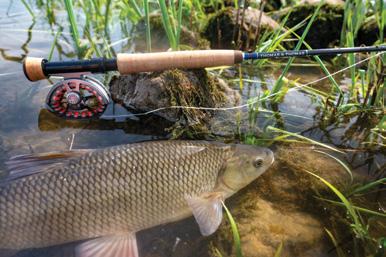

“The
Ides of March? Pfffft, try the ides of early June amigo. They’ll test you.”
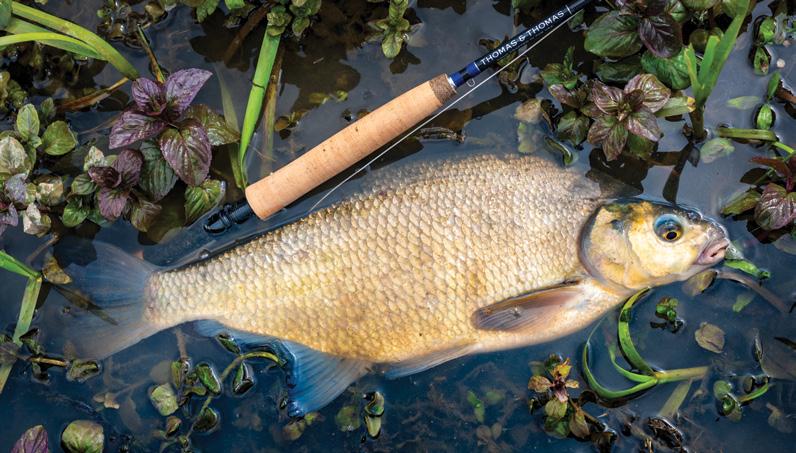
“Gerald says us European bream and I quote, ‘Fight worse than a wet sock and are incredibly slimy.’ We say, ‘Glass houses, Gerald...glass houses.’
“THE ZONE 10’2 HAS GREAT CONTROL AND EXCELS IN THAT CLOSE 2-3 ROD LENGTHS RANGE.”
I had one more test for the Zone this time, casting big dries to cruising ide. These fish become very active in warm sunny weather, and today the plan was simple. Stalk along the riverbank, keep a low profile and cast big dries to large fat ide. Ide are spooky, have excellent eyesight, and do not move far for a dry. So it’s the delicate balance of casting close but gently enough so they do not spook. With the Zone now armed with a 12-foot leader and a big Balbyter ant pattern, I peered over some bushes into water. Two ide were slowly finning diagonally away from me about 15m out. The perfect scenario as they were unlikely to see me and I could easily get a fly in front of them without the risk of lining them. The fly fluttered down about a metre in front of them and I waited as they slowly approached. One broke away from its partner. After an age of inspection, the ide gently rose and slurped it in. It thrashed about, in the typical headbanging fashion, and after I’d shot a few photos, it swam off strongly.
Enjoying the sunny weather and walking further upstream, I came across a fat loner cruising lazily up the bank. Thankful for the big bush that was hiding me, I again flicked out the ant. The Zone’s 10’2 length is a pleasant advantage when
casting from cover on the banks. Again the ide slurped in the ant and I tightened up. Today was a red-letter day with dozens of fish and opportunities like this. Not only did the Zone handle the bigger #10 dry flies and the short- to medium-distance casts well, it was simply very enjoyable to fish. Ide are not the strongest fighters, but get fat, heavy and use the current to their advantage. The rod had no problem fighting them. One minor adjustment to fishing with such a long rod is that I need to buy a longer-handled landing net. Twice I looked up while trying to land a fish only to see the rod tip under a severe bend.
In general, I like fly rods that I can use across a variety of styles and species. The Thomas & Thomas Zone 10’2 2-weight does this very well. It is an outstanding nymphing rod, excelling at accurate, close-range tactics. It is also no slouch with the dry and I had tremendous fun using it for ambush-style sight-fishing tactics. What next for me and the Zone? Welsh grayling are on the cards, and then I’m thinking it will be super-fun and effective at “eurostreaming” miniature streamers at 12-18” marble and brown trout found in the crystal-clear Slovenian tributaries.


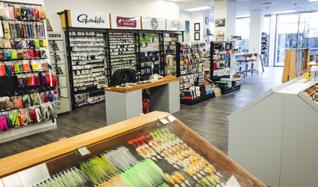
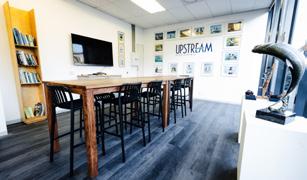
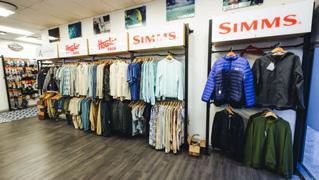


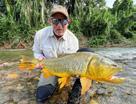
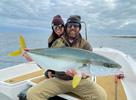
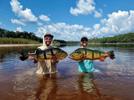


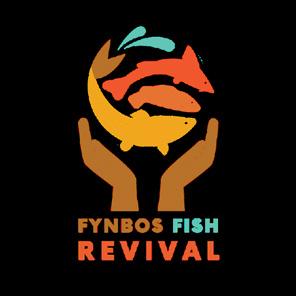



Ihave been trying to work out tilapia on fly for many years and it’s definitely not an easy quest. Almost every water is a little different and there are also many species of tilapia in South Africa, all of which have their different habits and quirks. Here in Cape Town we have six tilapia species, namely Mozambique tilapia (all over), Nile tilapia (Northern Suburbs and Winelands area), Vlei tilapia (all over), Israeli tilapia (Winelands), Cape tilapia (indigenous to the area) and Dwarf tilapia (Northern Suburbs).
The most aggressive species is probably the Mozambique tilapia, especially when they are nesting, although Israeli tilapia are also very aggressive in the same situation. The Mozambique tilapia are much easier than the Nile tilapia for me to catch on a consistent basis. In general Nile tilapia seem to swim and feed much deeper than the Mozambique species and it is harder to pinpoint their location. Because Mozambique tilapia (also known as blue kurper) have the habit of swimming near the surface in large schools of similar size, and disturbing the surface when spooked by a bird flying over, they are often much easier to target. Smaller to medium-size Mozambique tilapia can be very aggressive when you fish a nymph or small streamer through the school. I like to use a strip, twitch, retrieve using the rod tip, as this gives the flies a nice action while also hooking the fish if they nip the fly in-between strips.
Vlei tilapia can also be quite aggressive for their size but, apart from very large specimens, all of the tilapia species are nippers, unlike bass and trout. Conventional nymphs will very rarely actually hook the tilapia as they nip the fly and then let go very quickly, in addition to destroying it with their fine, sharp teeth. I have also caught redbreast tilapia further north in South Africa and they were very easy to catch on nymph patterns. They were a lot like Vlei tilapia but larger.
IN HIS QUEST FOR THE PERFECT FLY FOR TILAPIA, SEAN MILLS HAD AN EPIPHANY. WHAT WOULD REALLY GET THIS WIDESPREAD BUT TRICKY FAMILY OF FISH TO COMMIT IS THEIR TOUCHY-FEELY SIDE.
Photos. Sean Mills
I don’t like to chum for tilapia, which makes life harder. If you throw bread onto the water and then fish a fly in the area, it definitely helps your catch rate, regardless of the fly used. The addition of a bit of bread as chum will pull all types of fish into the area and get them competing which, in turn, makes them more aggressive towards a fly. I am not saying that I never chum, just that I only use it when I have very limited time or when my seven-yearold daughter is fishing with me as her patience is not too strong. If I fish waters that I don’t know very well it’s also an opportunity to use the bread chum to locate schools of tilapia more quickly.
Nile tilapia and schooling Vlei tilapia hold deeper in the water and don’t chase a fly as readily as the Mozambique species, so using the twitch-and-pause technique does not work as well for them. Large Nile tilapia do cruise closer to the surface and are easier to spot and may fall to a well-placed dry fly. Using the dry fly and dropper method with an almost static approach works way better. Because the flies are more static, however, actually hooking tilapia that inhale or nip the fly and then instantly spit it out, well... it can be very frustrating. What I needed was a fly that would actually fool the fish into thinking it was food and moving off with it, thus giving me more time to see the bite and set the hook in time.
“WHAT ACTUALLY CONSTITUTES A FLY THESE DAYS, THOUGH, WHAT WITH GUMMY FLIES AND THE SQUIRMY WORMY?”


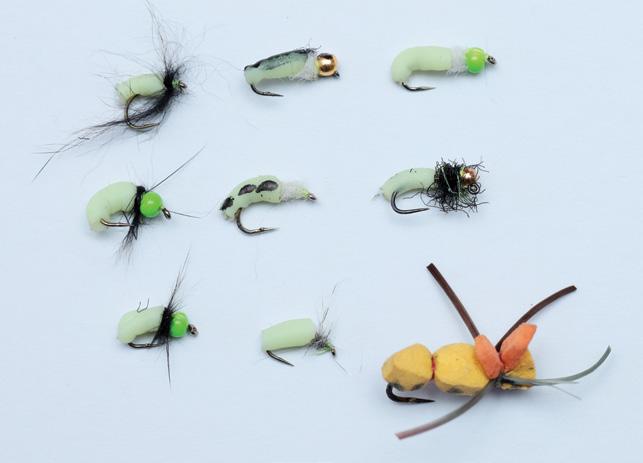
As an experiment I nipped a tiny piece of a white curly tail grub’s body and put that onto a nymph. As expected, it worked brilliantly and my catch rate went up about 80%. Calling this a “fly” though is maybe stretching it a bit and I was not sure if these curly tail grubs were “flavoured” in any way, which could explain why they worked so well. What actually constitutes as a fly these days, though, what with gummy flies and the Squirmy Wormy?
I also tried a chartreuse and then a yellow grub piece. Both worked well but the chartreuse one worked especially well. I tried different brands of curly tail grub, none of which stated that they were flavoured, with similar results. I also tried cutting plastic grub bodies to look like a maggot shape and put that onto the hook with a small tungsten bead up front. Again this worked really well. Instead of having to work the nymph to elicit a strike, simply leaving it drifting would result in a take and, if the fish was large enough, I would get a hook-up.
I started looking for alternatives to the curly tail grub bodies to confirm that it was the soft feeling of the body and not any flavour in the body that was making it work so well. The “tentacle” of a chartreuse “prickly ball toy”
bought at The Crazy Store for under R30 looked like it could do the trick. The tentacle is nicely tapered, stretchy, soft (important for fooling the tilapia into mouthing and moving off with the fly) and very durable. The material is very similar to the Squirmy Wormy. Incidentally, I thought that the Squirmy Wormy fly would be a killer for tilapia, but so far it has not impressed me that much on this species.
It is not possible to tie the material on the hook as it just cuts through. However, you can thread it onto the hook and it stays in place really well. Using the prickly ball toy tentacles, I made a few flies on different sizes and shapes of hooks, some with beads and some without. The bright green body mimics a caddis or midge larva very well. I shone an ultraviolet light onto it and found that it lights up like a beacon and is also mildly luminescent. The prickly ball toys are also available in light blue, light pink and yellow so room for experimenting certainly exists.
First trip out and I was amazed at how well this fly works. I normally use a foam hopper as an indicator and then tie 30 to 40cm of 4X tippet onto the bend of the hook to which I tie my nymph pattern.
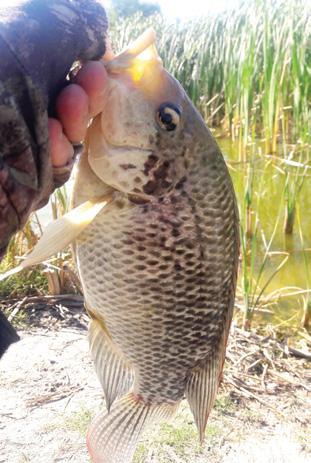
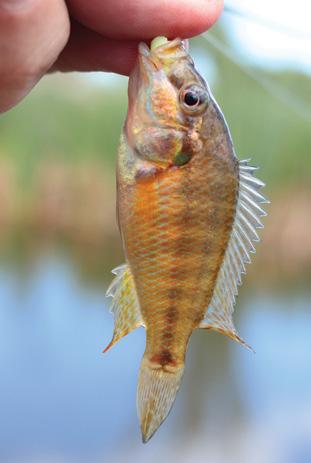
“THE BRIGHT GREEN BODY MIMICS A CADDIS OR MIDGE LARVA VERY WELL.”

This gives me excellent bite indication and keeps the fly out of the abundant detritus on the bottom. Sometimes, larger tilapia will go for the foam hopper, which is always a bonus. The little lake that I was fishing has Dwarf tilapia, Vlei tilapia and Nile tilapia with lots of reeds covering about 80% of the water. I tied a size 14 “special” nymph on and cast it out using my 8-foot, 3-weight fly rod. I find that splatting the flies down seems to attract the schools of tilapia to the area and then after a few seconds I give the flies a short, sharp jerk. The takes did not take long to come and, unlike when using conventional nymphs, the indicator actually moved away nicely.
I used a short side flick to help set the hook and was soon into the first Vlei tilapia. Most casts resulted in fish of
various sizes. I also hooked and landed a few small Nile tilapia and two Dwarf tilapia. Great success! So now, what to call this fly? Tilapia Candy?
On the next short trip I caught several Vlei tilapia and two larger Nile tilapia. What I noticed was that using the fatter part of the tentacle resulted in a wider body, like the plastic grub curly tail body. This worked very well. My conclusion is that the Nile and Vlei tilapia like a fatter and softer fly and will take it in deeper and swim off with it, unlike when using conventional nymphs that obviously don’t “feel” right in the mouth. You also don’t have to worry about your expensive flies being destroyed in short order. Because the body material is not tied onto the hook shank, you can exchange the body at any time for a fatter or thinner one. I have yet to try them out on the Mozambique tilapia but I expect similar results. One last thing, tilapia like warm water so fishing towards midday is often better. Avoid fishing for them in winter.

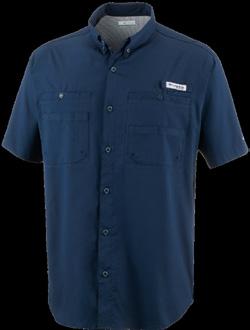
This hardworking angler’s shirt is designed for breathable comfort on and off the water. Fast-drying and sweat wicking, with UPF 40 sun protection, this fan favourite sports a classic look that fits in anywhere.



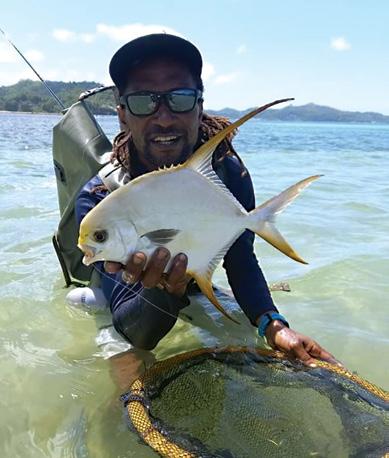
The first fish I caught on fly was a bonefish. I was very young , about 20 years old, at that time on Alphonse Island. I didn’t know much about fly fishing, but I was working as a guide, just driving the skiff and seeing fish. Every week the different clients would teach me more about how to fly fish.
I have been to many islands in the Seychelles and to me they all feel like home.
Most of the jobs I have done are ocean-related. I’ve done diving and other watersport activities, and many different types of fishing jobs. I worked for different companies over the years including over 22 years for Alphonse Fishing Co, where I experienced fly fishing on the Seychelles’ Outer Islands. For the last few years I have been freelance, based on Mahe.
At the moment I concentrate mostly on fishing the south of Mahe. I’m based at Aux Cap at the Jamelah Guest House. We fish various places along the south coast of Mahe, sometimes moving to the west during the southeaster.
My home waters are the flats, bays and channels around Mahe. I explore lots of different places for good fishing and I have found plenty of fish.
While I fish for all kinds of fish like GTs, milkfish, bonefish, permit, triggers and others, my favourites are GTs because I like the way they take flies and the way they fight.
BORN AND BRED IN THE SEYCHELLES, VETERAN SALTWATER GUIDE SERGE SAMSON WORKED FOR ALPHONSE FISHING CO FOR DONKEY’S YEARS, BUT THESE DAYS HE CAN MOST OFTEN BE FOUND GUIDING CLIENTS INTO BONEFISH, GOLDEN TREVALLY AND OTHER SPECIES AROUND MAHE.
Photos. C/o Serge Samson, Cameron Musgrave, Ty Pollock
The best advice I’ve ever been given is to never give up. Try until your last breath.
I’m most proud of my ability to guide my clients into the fish of their dreams, to see them catch a big fish that will mark them for the rest of their lives.
I have really had to work hard to have a home for myself and my family and to achieve my lifelong dream of setting up my own small fly fishing business, which I’m still fighting to get on its feet.
My most satisfying fish was a 122cm GT which I fought and landed alone while simultaneously driving the skiff and following it.
Something that keeps me up at night are the spiritual TV channels and programmes, as I am always eager to know more about God.
An angler can only lie when they are fishing alone.
A skill I would like to master is reading the weather and the sea so I can know exactly when and where to go for perfect fishing.
The biggest adventure I have been on was travelling by wind on a catamaran from the Seychelles to Madagascar and back.
The best way to face one’s fears is to stay calm and keep cool.
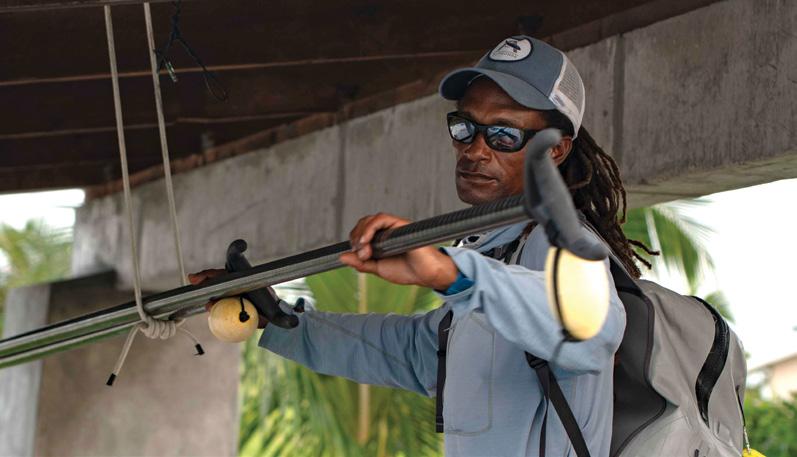
“AN ANGLER CAN ONLY LIE WHEN THEY ARE FISHING ALONE.”

Before I die I just want to make all my business dreams come true.
If I could change one thing in fly fishing it would be to ban using drones to spot fish. Doing it naturally with our eyes, using our knowledge to hunt the fish ourselves is more exciting.
Fly fishing has seen some changes over the years. On Alphonse, from when I started fly fishing to now there are many more species. Back then there were only a few permit, but nowadays there are a lot more. Same with GTs.

At that time, we were catching some big ones, but if you look now the guys are catching big ones every week.
I’ve changed my mind about killing fish. I used to kill fish for food, but understanding now that I need the fish for my fly fishing business to make my clients happy, I’d rather release them.
The last fish I caught on fly was a bonefish at Aux Cap. Planning on visiting Mahe? Get hold of Serge’s operation, GT Dream Fly Fishing on Instagram (@sergesamson1975)


From headwaters to court rooms, fighting pollution FOSAF fights to protect your fly fishing future.
Become a member today at fosaf.org.za
ORANGE RIVER, SMALLMOUTH KAROO, NATAL SCALIES, RIET RIVER, DULLSTROOM, BROWN WHEREVER YOU FISH, WITVIS,
LAKENVLEI, INJASUTI,
RIVER, CHISELMOUTH, KOMATI YELLOWFISH, PONGOLA RIVER, RIVER, SAWFIN, BARKLY EAST
pollution to challenging ill-thought out government legislation, future. For just R360 a year, you can help protect FOSAF.

PROFESSOR OF EDUCATED FISH OR HELD-BACK STUDENT OF BLUEGILL 101? TIGHT DRAG OR LOOSE NUTS? FIGHTING BUTT OR BUM FIGHTER? TAKE OUR RAPID-FIRE QUIZ TO FIND OUT IF YOU PICKED UP ABSOLUTELY ANYTHING FROM THIS ISSUE, OR IF YOU’RE THE KIND OF PERSON WHO CUTS OFF THE FLY INSTEAD OF THE TAG END.
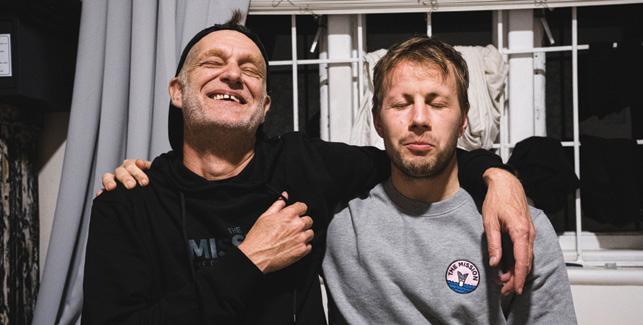
1.Which of the following jobs did driftwood sculptor Tony Fredriksson have before doing what he does now (page 26)?
A. Dermatologist.
B. Taxidermist.
C. Illustrator.
D. Flash dancer.
E. Lumberjack.
2. When guide Alasdair Grassie of Majestic Rivers refers to Pinkie as being “gorgeous with a big personality”, he is talking about... (page 30)
A. His girlfriend.
B. A tame bagrid catfish that gets fed in camp.
C. The camp manager.
D. An albino hippo.
E. His beloved inflatable doll. The bush gets lonely...
3. According to Rolf Nylinder, when someone (in this case guide Riley Meyer) has “storkukslugn” they have what (page 38)?
A. The aura of a lucky man.
B. The calm of having a big dick.
C. The rage of having small hands.
D. The vibe of having a trust fund.
E. The energy of enjoying enemas.
4. When Jeff Tyser drowns his sorrows in Boston while fishing around the “habah” he does so with... (page 54)
A. Ben Affleck’s tears.
B. Matt Damon’s apple juice.
C. Ward Eight cocktails.
D. Deep-fried haddock.
E. Home-made mampoer.
5. The best advice Nick Bowles of Ocean Active Fly gave brothers Matt and Andrew Kennedy while fishing for queenfish off Dubai, was... (page 62)
A. Follow the birds.
B. Make sure you can double-haul.
C. Strip slower.
D. Slow down.
E. Relax your arse.
6. According to Gerald Penkler, European bream fight like... (page 88)
A. A rabid honey badger on bath salts.
B. A wet sock.
C. Eben Etzebeth on oestrogen tablets.
D. Jake Paul on poppers.
E. Julius Malema at a Gucci sale.
